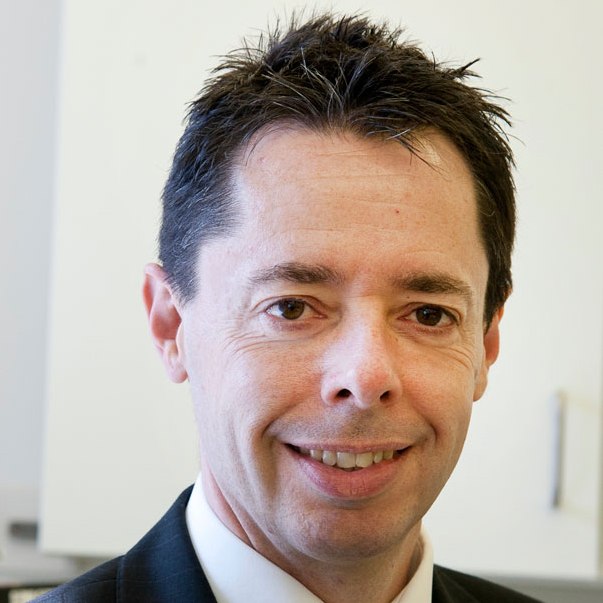
Innovation Academy events
A forum for change. Our Innovation Academy events aim to foster strong peer-to-peer communication on developments within pathology and across the wider healthcare community.
Events
 We regularly hold symposia that attract leading and up-and-coming members of the scientific community. As well as providing networking opportunities, the symposium includes presentations on current trends and developments. To date these have ranged from expanded newborn screening, to vitamin B12 deficiency, HIV drug resistance, pre-implantation genetic diagnosis and infectious diseases, and many more.
We regularly hold symposia that attract leading and up-and-coming members of the scientific community. As well as providing networking opportunities, the symposium includes presentations on current trends and developments. To date these have ranged from expanded newborn screening, to vitamin B12 deficiency, HIV drug resistance, pre-implantation genetic diagnosis and infectious diseases, and many more.
Follow us on Facebook, Twitter and Linkedin for updates on upcoming events.
A thank you to our partners at Stago and Roche for their support in sponsoring this event.
Morning Session
We are pleased to welcome Dr David Bennett, chair of Viapath, to open this year's Innovation Academy Symposium.
Chair: Dr Edward Davies, Consultant Clinical Scientist for the Department of Allergy and Clinical Immunology at King's College Hospital
Our morning session featured:
- Professor Jonathon Edgeworth - ' Antimicrobial Resistance - What Can We Learn From Control of the MRSA Epidemic.'
- Professor Graham Taylor - ' Acquiring, Managing and Sharing Genomic Data for Clinical Purpose.'
- Petros-Pavlos Ypsilantis - ' Deep Learning for Medical Diagnosis.'
CQI In Healthcare
Chair: Dr Yosuf Rahman, Consultant in Adult Inherited Metabolic Disease
This session featured:
- Jean Straus with Dr Katherine Bates - 'The Hackathon'
- Kamla Reddi - ' Using A3 Thinking to Investigate the Patient Sample Delivery from King's College Hospital to Guy's Hospital
- Dr Martin Myers MBE - ' Laboratory Anywhere: Delivering Diagnostic Where it is Most Effective - A New Paradigm of Diagnostic Delivery.
CQI In Healthcare Finalists
Fab Change Day took place on October 19th 2016, providing a national opportunity for individuals within healthcare to come together and harness our collective energy, creativity and ideas to make a change. To mark this, a pledge was launched across Viapath to improve pathology-dependent patient pathways with Continuous Quality Improvement (CQI) and shared learning. Following this, we introduced the Viapath Excellence in CQI Award to celebrate the diverse Continuous Quality Improvement work taking place across our sites.
The finalists:
- Dr Stamatina Agalou - ' Where on earth are my results?'
- Ian Hutton - ' Evolution of cystic fibrosis testing in South East Thames newborn screening laboratory.'
- Dr Luisa Beltran - ' Accelerating amino acid analysis the long way: Improving on analytical pathway using A3 methodology.'
- Erin Mozley - ' Use of A3 methodology to put the 'monitor' back into PKU monitoring.'
- Louise James - ' Sweat and Tears: A3 quality improvement project.'
- Kamla Reddi - ' Using A3 thinking to investigate the patient sample delivery fomr King's College Hospital to Guy's Hospital.'
With thanks to our judges:
- Helen Liggett, Scientific Project Lead for Quality Improvement (NHS England)
- Professor Jonathon Edgeworth, Medical Director (Viapath)
- Jean Straus, Patient Advocate, NWL CLAHRC Fellow
- Sarah Allen, Consultant Physicist and Head of Nuclear Medicine (GSTT)
Excellence In Pathology Award
Abstracts of up to 250 words were received from across the organisation for the 2016 Excellence in Pathology Award. The judging panel were delighted to find out about the innovative science that is taking place throughout Viapath.
The three shortlisted Finalists:
- Volha Klimovich - ' Clinical Utility of Pivka-II in the Diagnosis of Hepatocellular Carcinoma.'
- Andrew Bond with Amy Slater- ' A Better Way to Order Whole Exome Sequecing (WES) Tests.'
- Dr David Taylor - ' Development of a 13 Steroid Serum Panel Based on Liquid Chromatography-Tandem Mass Spectrometry: Use in Detection of Adrenocortical Carcinoma.'
With thanks to our judges:
- Dr Tony Marinaki, Consultant Clinical Scientist (St Thomas')
- Dr Edward Davies, Consultant Clinical Scientist (Princess Royal University Hospital)
- Dr Jim Wade, Viapath Clinical Director of Pathology (King's College Hospital)
Afternoon Session
Chair: Natalie Walsham, Lead Clinical Scientists and Clinical Director of Pathology at Lewisham abd Greenwich NHS Trust.
The Afternnon session featured:
- Dr Mark Zuckerman with Melvyn Smith - ' Hepatitis E Virus Testing'
- Frances Smith - ' The Impact of Next Generation Sequencing on the Diagnosis of Rare Red Cell Disorders.'
- Professor Roy Sherwood - 'Alcohol, The DVLA and Dry January.'
Speaker Profiles 2016
It gives me great pleasure to welcome you all to our sixth Innovation Academy Scientific Symposium, ‘Acquire, Learn, Share, Repeat’.
At our fifth symposium we shifted our focus from ‘Diagnostics’ to ‘Diagnosis’. We acknowledged that working at the limits of science in itself is not enough. We must also consider the wider healthcare community and constantly strive to improve the quality of the services we deliver to the patient. Today we build on that theme.
Recent advances in technology and data science mean that we have more data about people, their habits and their health than we have ever had before – astonishingly 90% of all recorded human data has been captured in the last two years.
The potential clinical utility of the data we acquire cannot be fully realised without the successful integration and analysis of this information. Master this, and the world will be transformed around us.
Biography
David has been Chair of Viapath since February of this year. Before this, from 2010 until 2015, he was Chief Executive, and for three of those years also Chair, of the healthcare regulator Monitor (now part of NHS Improvement). Monitor was responsible for authorising and overseeing all NHS foundation trusts in England. There were 152 FTs when David left office. Monitor was also the economic regulator for all healthcare provision in England.
Prior to this, David was Chair of ‘The 10 Partnership’, a start-up company that provided strategic and operational support to the public sector, particularly in health. He was also a Non-Executive Director of GHK Holdings, an international consultancy providing economic and policy advice and support to governments and multi-lateral funding agencies around the world.
From the General Election in 2005 until Tony Blair’s resignation in 2007, David was the Prime Minister’s Head of Policy and Strategy. Responsible for the Policy Unit in No. 10 and the Prime Minister’s Strategy Unit, his role was to oversee the development and implementation of domestic policy on the PM’s behalf, with a particular focus on public service reform, especially in healthcare.
Before working at No. 10 David was a Director with McKinsey & Co. where he was co-founder of the Firm’s European Utilities Practice and of its Global Business Technology Office. His work covered a wide range of sectors, but with a particular focus on highly regulated and technology-intensive industries. Before that, he was a research scientist and then head of scenario planning in Shell International.
David has a doctorate in nuclear physics and a first degree in physics. He is currently Visiting Professor at the Institute for Global Health Innovation at Imperial College, London.
Biography
Before becoming a clinical scientist, Edward trained initially as a biomedical scientist at King’s College Hospital London in the late 1960s.
In September 1973 he was given the opportunity with other colleagues to start a department of Immunology within the Division of Pathology at King’s, under the headship of Dr Dudley Tee. His passion for diagnostic immunology but was drawn especially into liver disease by my colleague Professor Diego Vergani whose enthusiasm for immunopathology of the liver was infectious. Teaching is a large part of his career, both formally (MB Pathology, MSc Medical Immunology (King’s College London) and MSc Immunology (Modernising Scientific Careers, Manchester University) and informally via internal seminars. Invitations to speak at national and international meetings are an opportunity he never declines.
Edward gained my MSc in biochemical immunology at the then North East London Polytechnic, his PhD at King’s College London and Membership of the Royal College of Pathologists some years later. He formally retired as Consultant Clinical Scientist from the Department of Allergy and Clinical Immunology (KCH) in June 2014 and since then has held the same post at the Princess Royal University Hospital, now part of the Viapath group, on a part-time basis.
Biography
Jonathan started as a medical student at Guy’s Hospital but quickly got drawn into research doing an intercalated BSc and then PhD in immunology and macrophage biology at Cancer Research UK, before deciding to return to medicine to complete basic clinical training.
After qualifying he went back to the laboratory to do post-doctoral research for two years and then became a clinical microbiologist combining his interest in immunology with bacterial infections. After becoming a consultant he did a further postdoctoral fellowship in Shigella disease pathogenesis at the Pasteur Institute in Paris and then on return to the UK took up a Clinical Microbiology consultant post at Guy’s and St Thomas’ in 2002. Seeing the dramatic rise in MRSA that had occurred within just a few years he focussed his research interest in that field – the focus for today’s talk.
At the same time as beginning his research on MRSA, and having spent almost as long in the laboratory as on the wards, he increasingly recognised the importance of leadership in helping make things better, and therefore applied and was appointed to the position of Clinical Director of Pathology in 2006. One main objective from the start was to help bring pathology scientists and clinicians closer together to build critical mass for our energies, talent and resources in improving delivery and development of services for patient benefit. To this end, in 2009 he led the creation of Viapath (then GSTS) as a novel partnership to catalyse laboratory modernisation, service improvement and growth. The Innovation Academy has been one of the outstanding success stories of Viapath and he is
Abstract
MRSA was the scourge of hospitals in the 1990s with the UK having the highest rates in Europe. From 2001 hospital MRSA rates were published for all to see, with Guy’s, St Thomas’ and Kings College Hospitals having some of the highest rates in the country. In 2004 the Government set an ambitious target to reduce rates by 50% prompting a national infection control campaign with publication of The Health Act, hospital inspections, national guidance, strengthened Board accountability, education and training in basic infection control (hand hygiene, barrier nursing and isolation), and targeted measures particularly universal screening and decolonisation. To the surprise of many, the target was achieved and exceeded with rates now down by about 90%. MRSA for many is a distant memory.
The laboratory played a significant role in control of this epidemic supporting the universal screening programme. MRSA culture initially took 3-5 days, improving to 24-48 hour with chromogenic agar, same day with laboratory-based PCR and even one or two hours with ward-based MRSA. Finally, the arrival of whole pathogen genome sequencing now has the potential to identify emergence of new strains, confirm outbreaks and link isolates to potentially identify exactly where someone’s MRSA came from.
In my talk I will reflect on this remarkable success story and look ahead to where next for MRSA and how diagnostics might help future preventative strategies. I will discuss MRSA in the context of the wider global antimicrobial resistance agenda and how our learning from MRSA can give us some reason to not lose hope as we face the new scourge of untreatable multi-drug, extremely-drug and pandrug resistant Gram negative bacteria.
Biography
Petros-Pavlos Ypsilantis is a PhD student in the Department of Biomedical Engineering at King’s College London. He received a Master degree in Statistics from Imperial College London, Departments of Mathematics in 2013 and an undergraduate degree in Applied Mathematics and Natural Sciences from the National Technical University of Athens in 2012. His research lies in machine learning with application to medical diagnosis.
Abstract
Deep Learning is a branch of Machine Learning, which has dramatically improved the recognition, interpretation and classification of images, text, speech, etc. It has also been widely investigated and applied to the identification of faces in social networks, object detection, segmentation and caption generation in natural images. The dramatic progress of deep learning lies in three main factors: the ability of deep learning architectures to discover intricate structure in high-dimensional data in ways that humans and traditional machine learning methods cannot, the increases in the amount of available computation and the existence of enormous data storehouses.
The power of deep learning is very interesting in the medical field. Here we show how deep learning can be used to achieve promising results in tasks such as histology image analysis, chest x-rays classification and interpretation, lung nodule detection in computed tomography (CT) scans and chemotherapy response prediction from FDG-PET Imaging. Our preliminary results indicate that deep learning techniques can potentially assist medical experts to increase the accuracy and the speed of diagnosis
Biography
Dr Yusof Rahman is a Consultant in Adult Inherited Metabolic Disease with some sessions in the Blood Sciences Laboratory, at Guy’s & St Thomas’ NHS Foundation Trust in London and an Honorary Senior Lecturer at King’s College London School of Medicine.
After graduating from University College Medical School in 1998 in Dublin, Ireland, he completed his general medical training and obtained the Membership for the Royal College of Physicians (MRCPI).
He spent further three years in Dublin as an Endocrine research fellow and worked on his doctoral thesis. In 2004, Yusof moved to London to join a Metabolic Medicine Specialist Registrar Training Programme at the Imperial College / Hammersmith Hospitals.
As part of his specialist training, he also spent two years at the Charles Dent Metabolic Unit, National Hospital for Neurology and Neuro Surgery, Queen Square in London. He obtained his Fellowship for the Royal College of Pathologists (FRCPath) in 2008.
He completed his specialist training with dual accreditations in Chemical Pathology with Metabolic Medicine in February 2009 prior to taking up the current consultant position. Despite spending more than half of his life abroad, as a true Malaysian, Yusof still enjoys good food, travelling and playing badminton on a regular basis.
Jean Straus Biography
Jean Straus is here today as a judge and speaker as a result of representing a less-well-known viewpoint, that of the patient. As Jean was retiring as a teacher of teenagers with mental health problems, she suddenly lost her hearing, and so was propelled into a world of unanswered questions. Unsatisfied with the status quo, she began volunteering, public speaking, campaigning, writing and fundraising. This year she qualified for a CLAHRC Fellowship (Collaboration in Leadership for Applied Research and Care) in Northwest London with the aim of improving communication and hearing for residents in care homes. As part of this Fellowship, she entered the Hackathon for Care competition in Liverpool where she discovered that representing herself as a patient, of whatever condition, carries with it a great deal of interest.
Dr Katherine Bates Biography
Katharine Bates is a Senior Clinical Scientist who works in both the Molecular Pathology and Clinical Biochemistry departments at King’s College Hospital. Since her appointment in 2009, she has transferred the Biochemistry molecular assays to the purpose built molecular laboratories and has developed and introduced new tests, including a porphyria genetics service to complement the porphyria clinic and specialist porphrin lab at Kings’ College Hospital. Her current interests are in developing and establishing a Next Generation Sequencing service with particular interest in iron studies, porphyria and the inherited endocrine cancers.
Abstract
The Innovation Agency together with the Chief Scientific Officer’s Quality Improvement Champions combined forces to hold a two day Hackathon in Liverpool in July 2016. The theme for the Hackathon was Collaborate to Improve Care, based around problems associated with care homes. Two members of the winning team, Katharine Bates and Jean Straus, will talk about their experiences at the Hackathon and where they’re now headed after their win.
Biography
Dr Myers is a Consultant Clinical Biochemist at Lancashire Teaching Hospitals NHS Foundation Trust (LTH), Preston UK, Laboratory Director of Clinical Biochemistry and Associate Divisional Medical Director for Diagnostics. Dr Myers is also the Lead Scientist for the Trust.
Dr Myers has taken a lead role in a continuous program of Pathology re-design as well as ensuring the effectiveness of Pathology delivery. This spans pathology delivery using state of the art robotics and advanced technology through to the use of point of care devices used anywhere. He chairs the Trust Point of Care Testing Committee.
His scientific interests include the use of automation, point of care testing and informatics in improving the quality of the diagnostic process, redesigning pathology delivery through innovation, and delivering a distributed and integrated laboratory service.
His clinical interests include the use of laboratory testing in improving patient pathways and he has introduced the “Laboratory Anywhere” concept of Pathology delivery where Lab in a Box and Lab in a Bag models are delivered in a variety of locations. He is involved in several projects for the direct delivery of diagnostics to BAME communities and vulnerable groups requiring different diagnostic pathways.
Dr Myers is on the CSO LIA team and within the CSO team he is leading on the delivery of Point of Care diagnostics in patients with Learning Difficulties and patients experiencing Mental Health issues.
Abstract
In the modern NHS, healthcare is being delivered anywhere along the continuum between the Specialist Hospital and the Hospital at Home. As over 80% of healthcare requires diagnostics for decision making, it is clear that the delivery of this model of healthcare can only occur if it is supported appropriately by diagnostics.
A diagnostic test is more than a cost; it has value, yet many of the strategies that have been developed for the delivery of diagnostics have been cost-orientated, and laboratory-focussed, and not value-orientated and patient pathway-focussed. These cost-orientated strategies have been successful, with a reduction in the NHS reference cost for pathology of about 25% in the past 6 years. However to support the modern NHS there is now a requirement to include value-orientated, patientfocussed strategies, which have the potential to reduce pathway cost.
The centralised laboratory will always have its role, but it is not the only model of diagnostics that should be used. For example there is evidencethat BAME, patients with learning disabilities and patients experiencing mental health do not access traditional pathways of diagnostics delivery; new models of diagnostics delivery are required to ensure diagnostic support to these patients. The Laboratory Anywhere model, utilising Lab-in-a-Box and Lab-in-a-Bag technologies, can deliver diagnostics at point of care for these groups, using, for example, pop-up diagnostic clinics. In addition placing diagnostic devices in wards, outreach teams, pharmacies, GP surgeries, patient homes (using self-testing or passive testing) etc, supported by the clinical governance and IT infrastructure of a UKAS accredited laboratory will ensure that the Laboratory Anywhere model can support modern healthcare delivery wherever it is required.
'Where on earth are my results?'
Biography
My name is Dr Stamatina Agalou and I am a HCPC registered Senior Clinical Scientist currently working in the IMD (inherited metabolic disorders) laboratory in the Biochemical Sciences department at Viapath, St Thomas’ Hospital.
I finished my BSc degree in 2000 (B.Sc. Hons in Biochemistry and Molecular Medicine), University of Essex (UK). I subsequently secured a studentship from Baxters Pharmaceutical, for a PhD in Biochemistry in the same university. It was very successful with numerous publications and a patent. However, my passion for the clinical perspective led me to the Clinical Scientist training program in September 2004 and as part of it I was awarded an MSc Clinical Biochemistry in 2007, King’s College (UK).
Currently, I am a Clinical Scientist with nearly 12 years of experience in one of the leading specialised laboratories. I have extensive experience with technical and clinical validation of IMD assays. I am frequently involved in teaching and training of laboratory staff and trainees. I undertake a variety of activities to provide quality assurance including audits, service improvements, EQA result interpretation and performance monitoring.
'Evolution of cystic fibrosis testing in South East Thames newborn screening laboratory.'
Biography
Studied Medical Biochemistry at the University of Birmingham between 2004 and 2007. Started training as a clinical scientist in 2008 at St Mary’s Hospital Paddington. Completed an MSc in Clinical Chemistry in 2010 at University College London. I joined the pathology department at Barnet hospital as a Clinical Biochemist in 2011 where I was given the additional role Deputy Lead for point of care testing. In 2012 I joined the South East Thames Newborn Bloodspot screening laboratory to ensure the laboratory would be ready to take part in the expanded screening pilot. In 2013 I helped install a new laboratory information system for the SE Thames laboratory and earned a Critical Acclaim award for my work. In 2016 I readied the SEThames laboratory to provide full result reporting to the Newborn failsafe system. Due to my understanding of the failsafe system I was nominated by my peers to become the London Screening laboratory representative for the Newborn Failsafe User group. I have an interest in technology and how it can be used improve healthcare services for both users and staff.
'Accelerating amino acid analysis the long way: Improving an analytical pathway using A3 methodology.'
Biography
I studied Biological Sciences at Warwick University and went on to train as a Biomedical Scientist working in Clinical Biochemistry at Southend Hospital. During my time working there I developed an interest in research work and so I left to complete a PhD at Barts Cancer Institute studying the proteomics of the PI3K signalling pathway. Following this period I entered the Scientist Training Programme, completing my training as a Clinical Scientist in Clinical Biochemistry at the Royal Sussex County Hospital. My paediatric metabolic placement at the Inherited Metabolic Disease lab at St Thomas’ Hospital was a highlight of my training and I was thrilled to join the lab as a Senior Clinical Scientist in February 2015. During my time here I have greatly improved my knowledge and understanding of the investigation and diagnosis of inherited metabolic disorders and I have developed a special interest in the applications of mass spectrometry to provide improved approaches to diagnostic testing.
'Use of A3 methodology to put the ‘monitor’ back into PKU monitoring'
Biography
After obtaining an undergraduate Masters in Biochemistry from the University of Oxford, I started my training in Clinical Biochemistry at Southampton General Hospital. During this time I developed an interest in Inherited Metabolic Disease (IMD) and subsequently started in a Senior Clinical Scientist post in the IMD laboratory in Biochemical Sciences at St Thomas’. During my three years in the IMD laboratory I have been involved in a number of Continuous Quality Improvement projects. I have developed my knowledge and experience of Lean methodology through a number of projects including those involving the PKU monitoring service, immunosuppressant analysis, and the post-analytical pathway in the IMD laboratory.
'A3 Quality Improvement Project.'
Biography
Louise James is a Specialist Biomedical Scientist who works in the Metabolic Department at Kings College Hospital. Having recently achieved the IBMS Specialist Diploma In Biochemistry Louise is continuing to pursue her academic aspirations by undertaking an MSc in Blood Sciences. She is a member of the Future Leaders in Innovation Team, where she uses her leadership skills to promote innovation and expertise within Viapath. Her current interests include assisting in the development of further biogenic amine assays using LC-MS and the training of biomedical scientists and support staff alike
'Using A3 thinking to investigate the patient sample delivery from King’s College Hospital to Guy’s Hospital'
Biography
Kamla Reddi is a Clinical Scientist in Histocompatibility and Immunogenetics (H & I) and works in the Clinical Transplantation Laboratory at Guy’s Hospital. Over the last 10 years she has completed a BSHI diploma in H & I, gained an MSc in Immunology, and registered as a Clinical Scientist. She is now in the process of sitting the RCpath part 1 examination.
Recently taking on the role of Training Manger within the laboratory she is involved in organising monthly journal clubs, case study reviews and monitoring mandatory training. She has taken part in a continuous quality improvement (CQI) project improving sample delivery pathway from King’s College Hospital to Guy’s Hospital.
She is a new member of the Future Leaders in Innovation Group and is currently involved in training within Viapath. Her current interests include training of new clinical scientists and STP’s, research and development within the laboratory and Lean working.
'Clinical Utility of PIVKA-II in the Diagnosis of Hepatocellular Carcinoma'
Biography
Volha Klimovich is a Biomedical Scientist in the Blood Sciences department at St. Thomas’. She graduated from International Sakharov Environment University in Minsk, Belarus, with Biomedicine specialty; and worked in Biochemistry in Belarus for five years. In the UK, prior to joining the Viapath team, Volha worked as a Biomedical Scientist in LabServices Ltd, Watford and Royal Brompton Hospital, London. The presentation for this Excellence in Pathology Award is based on Volha’s MSc in Biomedical Science thesis (London Metropolitan University), which she completed in 2016. Volha considers continuous professional growth to be her highest priority. Currently, she is conducting the Continuous Quality Improvement project in the Diabetic Day Care at St Thomas’ Hospital.
Abstract
Clinical utility of PIVKA-II in the diagnosis of hepatocellular carcinoma.
Alpha-fetoprotein (AFP), the marker that is currently in widespread use in diagnostic modalities for hepatocellular carcinoma (HCC), lacks sensitivity and specificity. Undercarboxylated forms of the vitamin K-dependent protein prothrombin, protein induced by vitamin K absence/antagonist-II (PIVKA-II), is a tumour marker which has demonstrated higher rates of sensitivity and specificity in the diagnosis of HCC than those of AFP. Furthermore, PIVKA-II can be successfully used as a prognostic marker, which widens the field of the potential application of this tumour marker. However, utilisation of PIVKA-II for this purpose is currently not employed in the UK.
The aim of this research project was to determine the clinical utility of PIVKA-II for the diagnosis of HCC. The project was based in the Nutristasis Unit of Viapath at St. Thomas’ Hospital (London). In the course of the project an automated chemiluminescent microparticle immunoassay was validated and used for quantitation of PIVKA-II in 87 patient samples received from the Gassiott Gastroenterology Clinic (St. Thomas’ Hospital, London) and the Hepatocellular Carcinoma Clinic in the Institute of Liver Studies (King’s College Hospital, London). All samples found to be PIVKA-II positive were screened for the presence of vitamin K antagonists (warfarin) to eliminate possible interference.
In our study PIVKA-II exhibited higher sensitivity and specificity (79.4% and 96.6%) comparing to those of AFP (70.6% and 82.4%). These preliminary data suggest that PIVKA-II is a promising tumour marker for HCC diagnosis.
'A Better Way to Order Whole Exome Sequencing (WES) Tests'
Andrew Bond Biography
I am based within the Viapath Genetics Laboratories in Guy’s Hospital. I am in the second year of my three year NHS Scientist Training Programme (STP) in Clinical Bioinformatics. Prior to this I worked at St George’s Hospital, Tooting, where I developed laboratory workflows for the 100,000 Genomes Project. Before working in London, I spent 6 months at a stem cell laboratory at the University of Oxford and 4 years in the Genomic Diagnostic Laboratory at the Manchester Centre for Genomic Medicine. I hold a BSc in Genetics from Cardiff University. In my free time I enjoy hiking, listening to music and travelling.
Amy Slater Biography
I am in my second year of the NHS Scientist Training Program (STP) in Clinical Bioinformatics, based within the Viapath Genetic Laboratories.
Prior to starting the STP, I undertook a PhD investigating the epigenetic and genetic variations between different sporadic renal cancers at the University of Birmingham, defending my thesis in December 2015. During my PhD I presented posters at international conferences in Frankfurt and Liverpool and published in peer review journals.
Outside of work I enjoy training and competing my dog Cadbury in dog agility, and I am also a keen sewer and seamstress. Whilst studying for my BSc in Pharmacology and Molecular Genomics at King’s College London, I developed a love for amateur dramatics, particularly the works of Gilbert & Sullivan, which I still regularly perform in and direct.
Abstract
WES offers clinicians the ability to interrogate any human gene and discover the genetic reason for a patient’s disease. It is particularly suitable for patients with rare diseases where the presentation is complex and difficult to diagnose clinically. As there are ~20,000 genes, the clinician needs to decide which personalised set of genes should be investigated for each patient.
The bioinformatics team within the Genetics Laboratories have created an application for clinicians to order WES tests. The app walks them through the process of creating a bespoke panel of genes that is appropriate for testing in their patient. Once the order is placed, lab processes are triggered automatically and when the results are ready for interpretation, the system helps scientists target their analysis to the right genes. The system also allows clinicians and lab staff to track each sample through the entire testing workflow.
This replaces the former inefficient and disjointed system, whereby test requests and associated information were transferred by email or verbally at multidisciplinary meetings. Having all information entered at the start and stored in one place saves lab time and prevents errors. Feedback from clinical and laboratory users has been very positive.
'Development of a 13 Steriod Serum Panel Based on Liquid Chromatography-Tandem Mass Spectrometry: Use in Detection of Adrenocortical Carcinoma'
Biography
David has been working at King’s College Hospital since 2009, initially as a regionally funded Trainee Clinical Scientist, completing an MSc in Clinical Biochemistry in 2011. He holds a BSc and PhD in Biochemistry, both from the University of Leeds.
Since gaining registration as a Clinical Scientist with the Health and Care Professions Council, David has led on the development and implementation of new liquid chromatography-tandem mass spectrometry methods in Clinical Biochemistry, where he is currently Operations Lead. David has a particular interest in endocrinology and is a member of the Association for Clinical Biochemistry and Laboratory Medicine and the Society for Endocrinology.
Abstract
Adrenocortical carcinoma (ACC) is a rare malignancy. Due to de facto enzyme deficiencies in steroid hormone biosynthesis, diagnosis is challenging as up to two thirds are biochemically silent. Urine steroid profiling by gas chromatography-mass spectrometry is an effective diagnostic test for ACC, quantifying the increased metabolites of steroid pathway synthetic intermediates which discriminate ACC from benign adrenal lesions. Corresponding serum assays for most steroid intermediates are unavailable, due to low demand or lack of immunoassay specificity. Serum steroid analysis by liquid chromatographytandem mass spectrometry (LC-MS/MS) is increasingly replacing immunoassay, especially for those most subject to cross-reaction.
In this study an LC-MS/MS method for measurement of 13 steroids in serum was developed and it’s utility in discriminating ACC (10 cases) from 38 non-ACC adrenal lesions assessed. In ACC, between four and seven steroids were increased versus up to 2 in the non-ACC group. 11-Deoxycortisol was markedly increased in all ACC cases, with all steroids in the panel except testosterone in males and corticosterone being useful in discriminating ACC from non-ACC adrenal lesions. In conclusion, serum steroid panelling by LC-MS/MS offers a highly novel diagnostic test for ACC, by combining the measurement of steroid hormones and their precursors in a single analysis.
Biography
Natalie Walsham is Lead Clinical Scientist and Clinical Director of Pathology at Lewisham and Greenwich NHS Trust.
Her research interests are in the field of biomarkers for the detection of alcohol misuse. She was a member of the group who carried out a study on behalf of the UK Department of Transport of biomarkers for alcohol misuse in the assessment of fitness to return a driving licence following disqualification in high risk offenders.
This study led to the adoption by the Driver Vehicle Licensing Authority (DVLA) of Carbohydrate Deficient Transferrin (CDT) as the sole biological marker in these cases. She also carried out studies on Ethyl Glucuronide (EtG) as a marker of medium-term alcohol excess which led to EtG becoming part of the protocol for assessing patients on the waiting list for a liver transplant.
She has been the co-author on three recent reviews on the subject of biomarkers of alcohol misuse and was the editor of Cardiovascular Disease and Laboratory Medicine for the Association of Clinical Biochemistry and Laboratory Medicine
Dr Mark Zuckerman Biography
Mark Zuckerman is the head of virology and a consultant virologist at King’s College Hospital. He is interested in the interface between the clinical service and research and development work.
Melvyn Smith Biography
Melvyn Smith is a Principal Clinical Scientist at Viapath, based in the Microbiology Department at King’s College Hospital Foundation Trust. Melvyn obtained his PhD at King’s College, University of London, in molecular biology working on the laccase enzymes of the commercial mushroom Agaricus bisorus. Further post-doctoral studies involved characterising fungal manganese peroxidise enzymes, followed by a move to Queen Mary and Westfield College investigating the effects of cytochrome p450s on barbiturate metabolism.
Abstract
Hepatitis E virus (HEV) infections are increasingly reported as a cause of acute hepatitis. HEV can infect both animals and humans and was regarded as a cause of sporadic hepatitis in resource-rich areas of the world, often travel associated and large outbreaks were seen in some resource-poor countries. Although it may lead to a mild hepatitis, immunosuppressed individuals can develop a persistent infection.
An increasing number of HEV infections have been reported in England and Wales attributed to eating processed pork products. Undercooked or raw game meat and shellfish have been implicated too. After HEV infections were reported after blood transfusion and solid organ transplantation, the Advisory Committee on the Safety of Blood, Tissues and Organs (SaBTO) recommended that HEV negative products were required for specific patient groups, namely allogeneic stem cell/bone marrow transplant and solid organ transplant recipients.
A review of the clinical issues will be presented together with an outline of how a quantitative real time HEV RNA rt-PCR was developed to meet the needs of monitoring a large transplant cohort at King’s College Hospital, London.
Biography
Frances is a Clinical Scientist working in the specialist haematology department at King’s College Hospital. She studied Genetics at the University of Sheffield, then worked at the Welcome Trust Sanger Institute in the high throughput DNA sequencing laboratories. Frances completed her Clinical Scientist training in Molecular Genetics Guy’s Genetics Laboratory then following registration, moved to the Institute of Cancer Research to help set up a diagnostic laboratory specialising in next generation sequencing for patients with inherited cancer syndromes. She is now working for Viapath on implementation of new genomic technologies in diagnosis of rare inherited anaemias.
Abstract
Diagnosis of rare anaemia is challenging, for example 80% of congenital non-spherocytic haemolytic anaemia cases are undiagnosed once pyruvate kinase and G6PD deficiencies have been excluded using enzyme assays. This low diagnostic yield is due to the extensive phenotypic and genetic heterogeneity of the conditions and the limited number of phenotypic tests, which are often of low specificity. Rare inherited anaemia can present at different ages but is most difficult to diagnose in neonates that have undergone recurrent blood transfusion as phenotypic testing becomes unreliable and the disease phenotype is masked. Genomic technologies, which are unaffected by the presence of transfused blood, hold more promise for patients with rare anaemia, detecting the underlying changes in their DNA that are causing the disease. We have developed a targeted gene panel to assess approximately 180 genes that are involved in rare anaemia and developed an automated data analysis pipeline to assess sequence and structural variants. We present data from 200 sequential diagnostic cases analysed with our red cell gene panel. These data show that a genomic approach is effective; a clear diagnosis is identified in 60% cases and a likely diagnosis made in a further 20% cases. This has led to a more rapid and accurate diagnosis for some patients, where previously this was not always possible. It has influenced patient management decisions regarding blood transfusion regimes and whether splenectomy is appropriate for their care. As a consequence DNA investigations are now being requested prior to specific phenotypic tests for paediatric cases. We have also diagnosed rare anaemia genotypes in patients that have presented with liver failure and one patient with a YARS2 sideroblastic anaemia presenting without the usual myopathy. These cases highlight the importance of data sharing and the collaboration required to realise the full potential of genomic technologies for diagnosis of genetic disease.
Biography
Prof Roy Sherwood is Consultant Clinical Scientist and Scientific Director of Viapath (King’s College Hospital). He trained at the Royal Sussex County Hospital, Brighton. In 2013 he became Professor of Clinical Biochemistry at King’s College London. He has an interest in biomarkers in liver, gastrointestinal and cardiovascular disease in particular. He has built up an interest in tumour markers associated with endocrinology and neuroendocrine tumours and the laboratory at King’s will soon be offering a comprehensive service for these. He has a BSc in Clinical Biochemistry from Salford University, and MSc in Clinical Biochemistry from Surrey University and a DPhil from Sussex University.
Abstract
Detection of harmful alcohol intake relies on a combination of self-report questionnaires and biochemical markers. Measurement of ethanol itself in blood or urine detects consumption of alcohol in the previous 12-36 hours but cannot give any information about chronic intake. Urine ethyl glucuronide testing widens the time window to 48-72 hours. Other markers such as gamma-glutamyl transpeptidase (GGT) and Mean Cell Volume (MCV) are increased in chronic alcohol misuse but have poor specificity. Carbohydrate deficient transferrin (CDT) is produced by the direct effects of alcohol on the enzymes involved in the creation or destruction of the carbohydrate side-chains on the transferrin molecule.
In 2008 the Department of Transport begun to realise that the biochemical markers in use for the assessment of high-risk offenders (HROs) seeking the return of their driving licences (GGT & MCV) were often abnormal in individuals who were abstinent from alcohol. This was especially true in subjects who were overweight or who had diabetes. They commissioned a study at King’s College Hospital and SLaM that showed that CDT had greater specificity in HROs and CDT was adopted in 2012 as the sole biochemical marker in such cases. King’s has carried out CDT testing since 2013 testing more than 90,000 individuals.
In January 2015 King’s participated in a study with University College London (UCL) as part of the ‘Dry January’ national campaign. This was aimed at assessing the benefits of abstinence for one month on general well-being and in the possible mechanisms of the physiological harm due to alcohol excess. CDT was used as in indicator of adherence. The most striking features of the results were reductions in weight, blood pressure and the pro-inflammatory cytokines and chemokines.
December 2015 event
Viapath's 5th Innovation Academy scientific symposium "It's Diagnosis, Not Diagnostics" took place at the Armourers' Hall in the City of London on 4th December, 2015.
This year's event not only discussed new scientific innovations, but also aimed to serve as a reminder that behind every sample and every diagnostic test, there is a patient. We put the patient at the heart of our forum for change, as we discussed the latest developments in pathology and the wider healthcare community.
See below for the full programme and agenda.
A thank you to our partners at Abbott, Hologic, Thermo Fisher Scientific and Stago for their support in sponsoring this event.
Session 1 - CQI in Healthcare
We were pleased to welcome Pat Roberts, who is Executive Director at Save Babies through Screening Foundation (UK), to open this year’s Innovation Academy symposium.
Our first session featured:
- Andy Brogan - “Do we know whether diagnostic medicine is achieving its purpose”
- Dr David Clark - “Acting our way to a new way of thinking - changing the way we manage at Path Links”
- Dr Tom Lewis - “Putting purpose back into Pathology” by Dr Tom Lewis"
Session 2 – Viapath Innovation Fund Sponsored Projects
Session 2 highlighted some of the hottest advances sponsored by our Innovation Fund. We heard from;
- Dr Bob Collins - “HLA Typing by Next Generation Sequencing”, Gemma Cross on “Cytokines in haematological syndromes”
- Dr James McMillan - “Identification and diagnosis of epidermolysis bullosa simplex skin disease with exophilin-5 defects using immuno-histochemistry and modern electron microscopic methods”
- Michaela Dowley - “TMS method for the measurement of homogentisic acid in patients with Alkaptonuria”
- Dr Tony Marinaki - "Next generation sequencing as first line screening for the diagnosis of inherited metabolic diseases by Dr Tony Marinaki"
Following the success of last year’s Richard Hurst Memorial Prize, the Viapath Excellence in Pathology Award 2015 celebrates cutting-edge scientific work being performed by staff across all of our sites. Abstracts of up to 250 words were submitted to an expert panel of judges from within our organisation, and the three finalists were invited to present their work as five minute lightning talks.
The winner was announced at the end of the symposium. The top prize of £500 in shopping vouchers was won by Aled Jones who is in his final year of the NHS Scientist Training Programme in Clinical Bioinformatics based within the Viapath Genetics Laboratories with the two runners-up, David Card and Kazia Mayger receiving £250 of vouchers. Well done to all!
Session 3 – Guest speakers
Our closing session welcomed;
- Dr Jignesh Patel - “Is there a need for monitoring NOAC levels in routine practice”
- Dr Calum Moulton - “Measuring systemic markers of inflammation as a novel link between depression"
- Prof Richard Thompson - "Type 2 diabetes” and “Bile acids cause liver disease and a whole lot more”
Viapath Excellence in Pathology Award 2015: Finalists Announced!
We are pleased to announce the finalists for our Viapath Excellence in Pathology Award, 2015;
- David Card: Clinical Scientist, Nutristasis Unit (St Thomas’ Hospital). Submission - Non-invasive method to assess vitamin K status in babies.
- Aled Jones: Final year NHS Scientist Training Program, Clinical Bioinformatics, Genetics department (Guy’s Hospital). Submission - New algorithm for PGD embryos that reduces the consumable cost and processing time of array CGH analysis.
- Kazia Mayger: Specialist Biomedical Scientist, Diagnostic Haemostasis laboratory (St Thomas’ Hospital). Submission - Generating blood group- specific reference intervals for two, new generation von Willebrand Factor activity assays on a large donor population.
The judges were very impressed with the quality of submissions for this prestigious award and for the level of innovation demonstrated in nominated works. Each finalist will present a ‘lightning’ presentation at the Fifth Innovation Academy symposium on Friday 4th December, 2015.
The winner will be selected by the Innovation Academy delegates based on scientific content, impact on patient pathway and for the quality of their presentation. With thanks to Rob Dunn from Cancer Genetics at Guy’s Hospital for leading the 2015 award process and to the judges:
- Dr RS Carling: Consultant Clinical Scientist and Director of Biochemical Sciences, St. Thomas’ Hospital
- Professor RA Sherwood: Consultant Clinical Scientist and Viapath Scientific Director, King’s College Hospital
- Dr M Smith: Principal Clinical Scientist in Infectious Diseases, King’s College Hospital
- Dr WS Wassif: Consultant in Clinical Biochemistry and Metabolic Medicine, Bedford Hospital
- Dr B Wilkins: Consultant Histopathologist, St. Thomas’ Hospital
Click on the icon below to listen to the finalists of Excellence in Pathology award after the winner was announced!
The finalists of the Excellence in Pathology award are interviewed after the winner was anounced by Viapathfutureleaders on Mixcloud
Speaker Profiles: 2015
It gives me great pleasure to welcome you all to our fifth Innovation Academy Scientific Symposium, ‘It’s Diagnosis,Not Diagnostics’. At our fourth symposium we explored how the delivery of ‘NextGeneration Diagnostics’ is about more than a test or a therapy.
It is about aligning multiple diagnostics, devices, IT and educationplatforms with the right expertise from an integrated network of skilled professionals, to deliver sustainable treatment pathways for better patient care in the future.
Today we build on that theme and will hear and learn about scientific innovations from 2015. Importantly we will also acknowledge that working at the limits of science in itself is not enough. We must also consider the wider healthcare community and constantly strive to improve the quality of the services we deliver to the patient.
Biography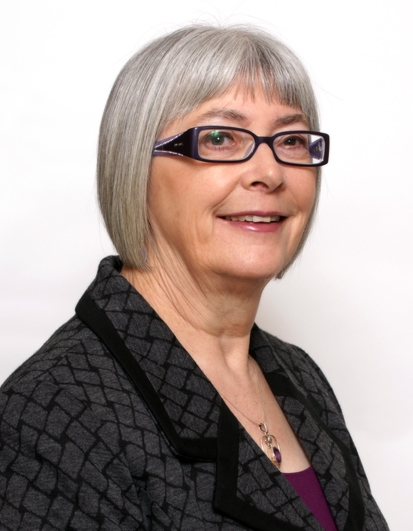
Following a career in government working for the Department of Work and Pensions, Pat founded the charity Save Babies Through Screening Foundation (Save Babies UK) in 2008.
Save Babies UK is a patient organization, run entirely by volunteers and supporting families affected by a rare disorder, Krabbe Leukodystrophy. The charity also advocates for the extension of the Newborn Screening programme in the UK for all appropriate inherited metabolic disorders.
Pat is the Chair of the UK Patient Advocates for Newborn Screening Group, a member of the UK Lysosomal Storage Disorders Collaborative and a PPV member of the NHS England, Clinical Reference Group for Inherited Metabolic disorders. In her 'spare' time Pat sings and is a member of a UK and European Championship Barbershop Chorus.
Abstract
Scientific and medical advances ensure that diagnosis and our understanding of disease is becoming ever more sophisticated and reliable.
However what does diagnosis really mean to families? How does it feel to be part of diagnostic uncertainty and to be on the receiving end of a diagnostic result? This presentation will explore the impact on families affected by rare disorders and why newborn screening extension is considered vitally important in achieving an earlier diagnosis.
Click the icon below to listen to Pat Roberts discuss the Scientific and medical advances.
Biography
Gary Nicholson trained in London in Microbiology before moving to Scotland to work in Dundee and Edinburgh. Now interim hub manager for Transforming Pathology Partnership at Ipswich previously.Gary was General Manager at Bedford for Viapath.
He attended the “Future Leaders in Pathology” course run by the Department of Health and Royal College of Pathologists which led into the service improvement event and A3 thinking and has supported CQI for the Viapath Future Leaders in Innovation.
Biography
Andy has worked at senior management level in health and care organisations in England since 2004.
Having cut his teeth as part of the team leading the integration of health and social care in Torbay, Andy now works at Vanguard Consulting, where he is practice lead for Health and Social Care. His work employs the Vanguard Method - a means to achieving exceptional levels of performance improvement through changing leadership thinking.
Do we know whether diagnostic medicine is achieving its purpose?
Abstract
Organisations worldwide are awash with examples of expensive change programmes which they have declared a success but where it appears that someone forgot to tell their customers. It is a consequence of the perspective taken. Seeing the world from the “inside-out” (i.e. from the organisation’s
viewpoint and not the customers’) leads to a focus on the wrong measures and therefore the wrong problems. The “solutions” which result only serve to move rather than remove the real problems, inflating costs.
Public services are no different. Whilst politicians and Whitehall crow about what their efficiency programmes have delivered, demand for public services continues to grow and budgets buckle. Rationalisations such as “an ageing population” or “rising expectations” are invoked to explain what’s happening but a weight of evidence suggests that heir impact is far less than commonly assumed and that other factors are in play but outside of the accepted narrative.
A better way starts with adopting a different (“outside-in”) perspective. This means establishing a clear and constant purpose which is rooted in understanding how value is created with and for citizens. Taking this perspective promotes a fundamental shift in the thinking that governs how our public institutions are designed, managed and led and the resulting focus leads to real solutions to better problems. In the case of diagnostic medicine this means a move away from optimisation within the lab environment, replacing that with a deep understanding of the role of diagnostic medicine in
supporting excellence in the health and care system at large.
Biography
Consultant Cellular Pathologist - Path Links, Lincoln, UK Consultant Haematopathologist – Nottingham University Hospital, UK Honorary Senior Clinical Lecturer – Imperial College, London, UK David undertook general professional training in general medicine and clinical haematology before training as a Histopathologist.
He has a subspecialist interest in Haematopathology and is co-author (with Bridget Wilkins and Barbara Bain) of a textbook on bone marrow pathology and has contributed chapters to a number of other textbooks. He was Clinical Director of Path Links (a managed pathology network across all five District General Hospitals in greater Lincolnshire) from its formation in 1998 until Feb 2014.
He was a National Clinical Lead for Histopathology at NHS Improvement from 2011-2013. He is part of the team that developed and delivered 4 national CQI leadership programmes for senior Pathology professionals and Radiologists (2012-2014). He currently works between Path Links and Nottingham University hospital where is part of the team developing an integrated Haematological Malignacy Diagnostic service for the East Midlands Cancer Network. David is married with four grown up children and one grandchild, a dog and two cats.
Acting our way to a new way of thinking - changing the way we manage at Path Links
Abstract
Lean is a comprehensive system of management based on the Toyota production system (TPS), encompassing all the activities of an organization. It focuses management activity on creating value for the end-user by continuously improving operational effectiveness and removing waste. Lean management creates a culture of continuous quality improvement with a strong emphasis on developing the problem solving capability of staff using the scientific method (Deming’s Plan, Do, Check, Act cycle).
Lean management systems have been adopted by a number of Histopathology departments throughout the world to simultaneously improve quality (reducing errors and shortening turnround times) and lower costs (by increasing efficiency).
This article describes the key concepts that make up a Lean management system, and how these concepts have been adapted from manufacturing
industry and applied to Histopathology using a case study of Lean implementation and evidence from the literature. It discusses the benefits, limitations and pitfalls encountered when implementing Lean management systems.
This paper was originally published in the Annual Review issue of Virchows Archiv 2015 as Quality improvement in basic histotechnology: the lean approach available as ‘Online First’ on http://link.springer.com/article/10.1007/s00428-015-1838-0.
Biography
Following a degree in Natural Sciences, Tom studied for a PhD in Dundee, followed by a post-doctorate in Bordeaux. He studied medicine in the West Midlands and has published on a variety of topics, from assessment of hospital cleaning to whole genome sequencing of MDR-Acinetobacter.
He was appointed as Consultant Microbiologist in North Devon in 2010 and has been Lead Clinician for Pathology since 2012. Over the last few years, he has been particularly interested in how diagnostics can be used to redesign health systems.
Putting purpose back into Pathology
Abstract
Tom will talk about how system conditions have led to laboratory medicine becoming increasingly divorced from what matters. He will discuss how a new approach to quality based on leading measures may help get us back on track.
Biography
Louise James is a Specialist Biomedical Scientist who works in the Metabolic Department at King’s College Hospital. Having recently achieved the IBMS Specialist Diploma in Biochemistry Louise is continuing to pursue her academic aspirations by undertaking an MSc in Blood Sciences.
She is a member of the Future Leaders in Innovation Group, where she uses her leadership skills to promote innovation and expertise within Viapath. Her current interests include assisting in the development of further biogenic amine assays using LC-MS and the training of biomedical scientists and support staff alike.
Biography
Deputy Laboratory Director Head of DNA & Stem Cell Transplantation Clinical Transplantation Laboratory Viapath at Guy’s Hospital. Having completed a degree in Pharmacology in 1988, Bob worked at the Royal Veterinary College as a biochemical research technician, before moving to NHSBT-Tooting in 1991 to train as a state registered biomedical scientist.
In 1993 Bob completed an MSc in Applied Haematology and began to specialise in white cell and platelet immunology. He joined Guy’s and St. Thomas’ NHS Foundation Trust in 1996 working in the routine serology and DNA sections of the Clinical Transplantation Laboratory, supporting the South Thames renal transplant programme.
Bob started a PhD in 1999 and in 2003 was state registered as a clinical scientist and became head of the advanced DNA section. In 2006 Bob took responsibility for the work supporting stem cell transplantation and in 2007, having completed his PhD, he became deputy director of the laboratory. In 2009 he was seconded to Viapath and assumed the role of operations manager. His special interests include stem cell transplantation, sequenced based HLA typing and MHC class I chain related genes.
HLA Typing by Next Generation Sequencing
Abstract
Introduction: Human leucocyte antigen (HLA) genes play an important role in the success of haematopoietic stem cell transplantation (HSCT), solid organ transplantation and are associated with autoimmune and infectious diseases. Current standards for HSCT and the high level of polymorphism make HLA genotyping by Sanger sequence-based typing (SBT) challenging. Ambiguous HLA typing results are often determined that require reflex testing to identify cis/trans nucleotides and, in some instances, define polymorphisms outside the region amplified. Next generation sequencing (NGS) techniques may resolve this issue through the combination of sequencing larger regions of genes and determining haplotype phase information using clonal amplification combined with software analysis. This study has evaluated NGSgo® (GenDx, Utrecht) using the MiSeq (Illumina, USA) platform against SeCore® (ThermoFisher Scientific, USA).
Methods: 48 Samples from external quality assurance (QA) schemes with known HLA types were selected for this study. DNA from each sample was amplified by PCR-SSP to generate individual amplicons for HLA-A-B, -C, - DRB1 and - DQB1 loci. Equimolar concentrations of each locus were pooled for each sample. Each pooled sample was fragmented, end-repaired, dA-tailed and cleaned up using magnetic beads to size select DNA fragments of ~400 bp. Each end of the DNA fragments was labelled with Dr Robert Collins (BSc, MSc, PhD) unique indices for paired-end sequencing. DNA clean up and size selection was repeated and the samples pooled. A pre-determined concentration was loaded into a MiSeq nano-cell for sequencing. The raw data was
submitted to NGSEngine® for analysis against the IMGT/HLA database (version 3.20, April 2015) to determine the HLA types.
Results: 203 loci were analysed from 41 samples and 198 (97.5%) were concordant with the HLA types obtained previously. Two HLA-DRB1 loci failed to amplify for subsequent analysis. Four of the five loci with discrepant results were HLA-DRB1 and two of these contained nucleotide mismatches with
the IMGT/HLA database. One HLA-A type differed from the original with a null allele being identified. The results submitted to the QA schemes as determined by SBT contained 26.1% ambiguities, whereas the results from NGSgo® contained 1.5% ambiguities.
Conclusion: Other studies have shown up to 99% concordance between HLA typing by various NGS methods and SBT, so 97.5% concordance suggests a high quality product following comprehensive development by the manufacturer. The failure of two amplifications (~1%) is consistent with the level seen in our laboratory for other PCR-SSP methods. The HLA-DRB1 locus discrepancies could not be resolved and suggest optimisation is required, but the HLA-A locus discrepancy was correct. HLA typing by NGSgo® is a comparable method to SeCore® SBT, but can resolve a higher percentage of ambiguities without additional work. NGSgo® is not suitable for low throughput due to MiSeq reagent costs. There is a minimum number of samples that must be batched to be comparable with the costs associated SeCore® SBT, but it is scalable and a low cost method providing high resolution HLA typing when used at high throughout.
Biography
Gemma has been working at King’s College Hospital since 2010, initially as a regionally funded Trainee Clinical Scientist, completing an MSc in Clinical Biochemistry in 2012.
She holds a BSc in Biochemistry from the University of Bath. Since gaining registration as a Clinical Scientist with the Health and Care Professions Council, she has been working in the busy Contract Research team at Viapath where she has developed an interest in measuring cytokines.
Cytokine array analysis in haematological disorders and in alcoholism
Abstract
The important role of cytokines and chemokines in both pro-inflammatory and anti-inflammatory states has been well known for many years. This has led to several conditions being identified that are caused by excess production and release of cytokines. Castleman’s disease (CD) is a rare non-malignant inflammatory condition with diverse symptoms and high morbidity and mortality rates that is associated with marked increases in interleukin-6 (IL-6).
About 30% of patients with CD are associated with POEMS syndrome with evidence of a paraprotein, peripheral neuropathy and osteosclerosis. POEMS syndrome is linked to excess Vascular Endothelial Growth Factor (VEGF). The pharmaceutical industry has developed humanised antibodies against the receptor to IL-6 (tociluzumab) and IL-6 itself (siltuximab). It is proposed that measuring cytokines in plasma may aid in guiding treatment and monitoring disease activity.
Biography
The National Diagnostic Epidermolysis Bullosa (EB) Laboratory at St Thomas’ St. John’s Institute of Dermatology Viapath LLP at St Thomas’ Hospital.
James McMillan started his scientific career after graduating from the University of York (studying Human & Applied Biology) and the University of London (studying Master of Science in Experimental Pathology and Toxicology).
In 1990 he joined the Department of Cell Pathology and his scientific career progressed as a research associate while he gained a Ph.D. (from King’s College, London) examining human skin development and the group of blistering skin diseases that comprise epidermolysis bullosa (EB) and related congenital skin disorders. He later became a Welcome-funded Postdoctoral Research Fellow, studying the role of the keratin intermediate filament associated proteins including plectin in skin and muscle disease and identified the first human genodermatosis affecting desmosomal keratinocyte junctions with mutations in the gene encoding plakophilin-1 leading to skin fragility and hair loss.
Between February 2000 and 2004 Dr. McMillan completed further postdoctoral training, working on skin and muscle at Hokkaido University Graduate School of Medicine, Dermatology in Sapporo, Japan. In 2004, Dr. McMillan became Professor of skin tissue engineering within the Faculty of Science at Hokkaido University, Japan devising new skin grafting treatments. In 2008 Dr McMillan became Head of the Burns Research Laboratory at the Royal Children’s Hospital in Brisbane, Queensland where he studied skin burn tissue engineering and skin cell cytokine expression. In 2012 James returned to the UK to join the National Diagnostic Epidermolysis Bullosa Laboratory as the Clinical Scientist lead in microscopy.
Dr. McMillan has an impact factor of over 400 and has published over 85 original articles in peer-reviewed journals including Nature Medicine. His greatest achievement has been in identification of the underlying causes of different genetic skin diseases affecting important structural skin proteins.
Identification and diagnosis of epidermolysis bullosa simplex skin disease with exophilin-5 defects using immuno-histochemistry and modern electron microscopic methods
Abstract
Microscopy Lead, National Diagnostic Epidermolysis Bullosa (EB) Laboratory Viapath LLP, St John’s Institute of Dermatology, St Thomas’ Hospital, London, UK.
Epidermolysis bullosa (EB) comprises a group of genetic skin diseases classified into three major subtypes depending on the level of skin cleavage within the epidermal keratinocyte or basement membrane zone and is caused by defects in one of approximately 18 distinct genes. Tissue separation occurs either within the basal keratinocyte epidermal cytoplasm, through the lamina lucida, or in sub-lamina densa region of the dermal epidermal junction in EB simplex, junctional EB, and dystrophic EB, respectively. Indirect immunofluorescence (IF) antigen mapping and transmission electron microscopy (TEM) have proved effective to determine the level of tissue separation and hemidesmosome (HD)-anchoring filament/fibril component defects if performed by experienced operators. IF and TEM have also proven to be a powerful techniques for the diagnosis of new subtypes of EB with novel genetic defects. Recent advances in EB next generation screening combined with better microscopic tests such as 3View EM will enable us to improve the diagnostic efficiency of EB simplex cases with defects in exophilin-5 (EXPH5).
Our overall aim is to improve our understanding of the pathogenesis of all rare and difficult-to-diagnose EB subtypes particularly those involved in unexpected epidermal keratinocyte functions.
Biography
Principal Clinical Scientist, Inherited Metabolic Disease Laboratory Michaela came to Viapath in 2009 as a trainee on the NHS London Clinical Scientist training program. Guy’s and St Thomas’ served as her host institution. After completing her training period and spending time in various laboratories she was fortunate to obtain a permanent position within the IMD laboratory.
She completed the London MSc in Clinical Biochemistry with Distinction in 2011 and achieved FRCPath Part 1 in March 2013. She is a registered Clinical Scientist with the Health and Care Professions Council.
Michaela is a member of the British Inherited Metabolic Diseases Group (BIMDG), which is the National group for professionals working in the field of IMD and also serves on the BIMDG committee where she is the representative for scientist trainees and Editor of the BIMDG Bulletin, the official newsletter of the group. She is a member of the Association of Clinical Biochemistry, the British Inherited Metabolic Diseases Group and the Society for the Study
of Inborn Errors of Metabolism.
TMS method for the measurement of homogentisic acid in patients with Alkaptonuria
Abstract
Development of a stable isotope tandem mass spectrometry method for the measurement of homogentisic acid in patients with Alkaptonuria. Alkaptonuria (AKU) is an autosomal recessive disorder affecting 1 in 250,000 to 1 in 1,000,000. It is caused by lack of the enzyme homogentisic acid dioxygenase which results in the accumulation of homogentisic acid (HGA) in the cartilage, connective tissue, plasma and urine of affected patients.
AKU typically presents in the 3rd or 4th decade of life with severe premature arthritis, pigmentation (also called ochronosis) leading to multiple joint replacements and ultimately a wheelchair bound existence. Until recently treatment options were limited to analgesia and symptomatic measures, with dietary manipulation and vitamin C being of limited value. However, Nitisinone, a potent inhibitor of the second enzyme in the tyrosine catabolic pathway has recently been suggested as potential therapy. A three year follow up study was encouraging, with significant reduction (up to 95%) of urinary HGA following Nitisinone treatment.
The aim of this project was to develop and validate a robust stable isotope mass spectrometry assay to quantitate urinary HGA in patients with Alkaptonuria with a view to monitoring response to treatment. A method for urinary HGA was developed and validated using LC-MSMS with negative electrospray ionisation. A study was undertaken to compare samples from patients with Alkaptonuria in conjunction with the Mayo Clinic. This method is useful in confirming the presence of HGA as a diagnostic marker for Alkaptonuria and also for monitoring known
patients undergoing treatment.
Bigraphy
Dr Tony Marinaki is a Consultant Clinical Biochemist in Biochemical Sciences at St Thomas’ Hospital, joined the Purine Research Laboratory in 1999.
His current research focuses on improving the diagnosis of inherited metabolic diseases and the pharmacogenetics of purine and pyrimidine drug analogues.
Next generation sequencing as first line screening for the diagnosis of inherited metabolic diseases
Abstract
The diagnosis of inherited metabolic disorders (IMD) is clinician-led, with the evolving clinical presentation directing laboratory testing beyond the standard acute metabolite screens. Nationally, there are specialist services for most metabolic disorders, however no single UK laboratory is able to offer tests for the diagnosis of all metabolic disorders. As a result, just one-third of inherited metabolic defects are diagnosed by the age of one year.
Limited clinical exome sequencing should be considered as a first line screening test able to diagnosis most genetic disorders in a single assay. However, there are concerns that the number of false positives may be high, leading to unnecessary and costly investigations.
In collaboration with the Metabolic Consultants at the Evelina London Children’s Hospital, we undertook a proof of concept study to demonstrate that limited clinical exome sequencing has potential as a first line IMD screening test. We were blinded to all patient clinical and demographic information.
Although at the time of writing, we are still blinded to the true metabolic defect in these patients, we are confident that in two thirds of patients we have made the correct diagnosis. The next step is to trial limited clinical exome sequencing in the clinic to demonstrate benefit to patients and their families, and provide evidence of cost savings to the NHS.
Click the icon below to listen to Tony Marinaki discuss the Next generation sequencing.
Dr Tony Marinaki speaks to Sam Sheppard after his talk on inherited metabolic disease by Viapathfutureleaders on Mixcloud
Biography
After Graduation in 1999 from Queen Mary College, University of London David worked as a radiochemist at The Psychiatry Institute, Karolinska Hospital in Stockholm, Sweden.
He returned to the UK in 2002 to begin training as a Clinical Scientist at the Nutristasis Unit, St. Thomas’ Hospital, London where he has remained ever since.
In 2006 he attained a masters degree in Clinical Biochemistry from King’s College, London and became a state registered Clinical Scientist in 2009. His research interests are focussed on vitamin K metabolism and vitamin K antagonists.
Measurement of vitamin K metabolites in neonatal stool samples allows non-invasive comparison of vitamin K metabolism in term and pre-term neonates
Abstract
Nutristasis Unit, Viapath, St. Thomas’ Hospital, London, UK
Prophylactic phytomenadione (vitamin K1) effectively prevents vitamin K deficiency bleeding of the newborn. However there are currently insufficient data to inform further dose optimisation which may be desirable, particularly for preterm infants.
A non-invasive method to assess vitamin K status was devised for the measurement of the two major metabolites of vitamin K in neonatal faecal matter which was successfully applied to the comparison of patterns of excretion in term and preterm neonates. Meconium and subsequent stool samples were collected longitudinally from 21 infants (11 preterm, 10 term) during the first 6 months of life. All term neonates received 1 mg intramuscular (IM) vitamin K1, preterm neonates received ~0.4 mg/Kg IM. Data on type of milk feeding regimes were collected during the study.
Comparison of vitamin K metabolite excretion indicated preterm neonates have a reduced rate of vitamin K metabolism during the first 12 weeks of life, which reaches rates equivalent to term neonates between 5 and 12 weeks of life. There was no significant difference in the relative abundance of the two metabolites in the two groups (preterm mean 7C excretion = 35.2 % of total metabolite excretion, term = 36.0%). Mean faecal vitamin K metabolite excretion was markedly elevated in formula vs. breast milk fed neonates.
The assessment of vitamin K status by measurement of vitamin K metabolite excretion in stool samples may allow a non- invasive means to refine phytomenadione dosages in neonates.
Biography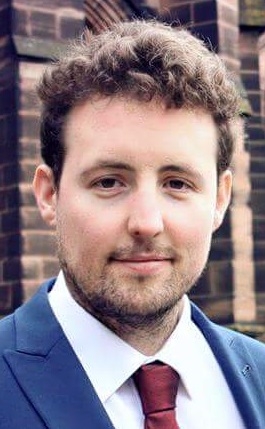
Aled is in his final year of the NHS Scientist Training Program in Clinical Bioinformatics based within the Viapath Genetics Laboratories.
Before moving to London he spent four years in the Cytogenetics department of St Mary’s Hospital, Manchester and before that a year in a forensics company near Oxford. In between Oxford and Manchester he undertook an MSc in Medical Genetics at Newcastle University. Outside of work he enjoys rugby, running, curries,
travelling and gadgets.
EvE: In silico hybridisation of embryos for microarray studies in Pre-implantation Genetic Diagnosis
Abstract
Array CGH is used for pre-implantation genetic diagnosis (PGD) of embryos with abnormal copy number variation. DNA from an embryo and a reference sample is labelled with fluorescent dyes before being hybridised to an array containing 60,000 oligonucleotide probes. At each probe the signal intensity of each dye is measured, normalised and the log(2) ratio between samples calculated. The log(2) ratios are used by an algorithm to call regions with abnormal copy number variation.
A more efficient method would be to hybridise one embryo to another embryo; however, due to the risk of one embryo failing and therefore making the other embryo unanalysable, this is not current practice.
Embryo vs Embryo (EvE) is an algorithm which allows hybridisation partners to be analysed independently. Any two samples can be re-hybridised in silico, using signal intensities to calculate a new log(2) ratio which can be analysed as if they were hybridised in vitro. Preliminary results show samples re-paired by EvE are concordant with the expected result.
EvE allows embryo to embryo hybridisation with no danger of a failing embryo affecting the hybridisation partner, halving consumable
costs and processing time.
In addition, samples of different material (eg embryo and reference DNA from cultured cells) are labelled with varying efficiency, affecting the signal intensities and therefore the log(2) ratios and calling algorithm. Hybridising embryo to embryo reduces this variation increasing the test sensitivity and specificity.
Biography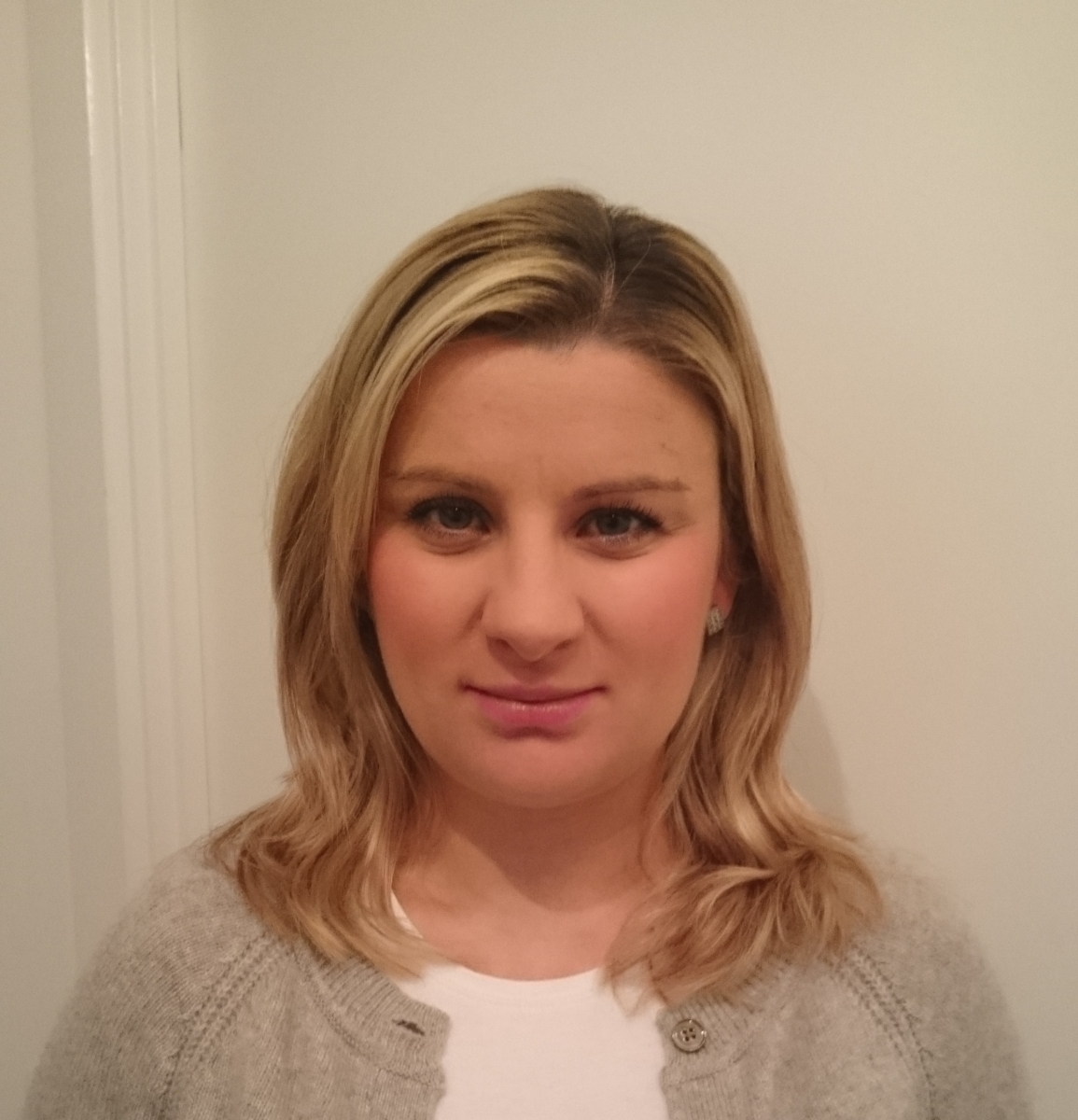
Kazia is a biomedical scientists registered since December 2012. She has been employed by Viapath since May 2009.
She is now a specialist BMS since passing her specialist exam two weeks ago. She is still involved in the ongoing von Willebrand collaboration project with scientists from Belgium.
Generation of reference intervals for two automated, new-generation von Willebrand factor activity assays on a large donor population
Abstract
Background: Circulating von Willebrand factor (VWF) levels are influenced by a variety of biological factors. Normal individuals with O blood group demonstrate 25%-35% lower VWF levels than non-O individuals.
Aims: To generate general and blood group-specific reference intervals (RIs) for 2 new-generation VWF activity assays on a large donor population.
Methods: The HemosIL VWF:RCo assay (on an ACL TOP 500) involves binding plasma VWF to recombinant GpIbα fragments attached to latex particles with the aid of ristocetin. The Innovance VWF:GpIbM assay (on a Sysmex CS2000i) utilises a recombinant GpIbα containing two gain-of-function mutations and is ristocetin-independent. VWF antigen (VWF:Ag) was determined using HemosIL VWF:Ag immunoassay on the ACL TOP 500.
Results: Three parameters were derived from each of the 201 plasma samples obtained from healthy donors. 183/201 samples had a known ABO blood group. RIs were calculated as 95% confidence limits. Median (M) and RI values are presented as follows: Non-O blood group (N=84): VWF:Ag: 110.8; 64.5-185.5; VWF:RCo: 97.7; 50.1-153.5; VWF:GpIbM: 100.1; 37.1-164.3. Group O (N=95): VWF:Ag: 82.8; 53.2-127.4; VWF:RCo: 72.3; 44.8-123; VWF:GpIbM: 66.8; 31.6-105.1. Combined results, irrespective of blood group, (N=201): VWF:Ag:94.2; 53.3-169.7; VWF:RCo: 86.6; 47.0-152.9; VWF:GpIbM: 80.2;38.0-165.2. All results are expressed in IU/dL.
Conclusion: Blood group significantly influences VWF levels and it is important to use blood group specific reference intervals for the diagnosis of VWD. The VWF activity values also depend on the method of analysis applied. VWF:GpIbM demonstrates lower values for VWF activity when compared with VWF:RCo. Reagent / analyzer specific RIs should be locally determined.
Biography
Professor Roy Sherwood is Consultant Clinical Scientist and Scientific Director of Viapath at King’s College Hospital. He trained at the Royal Sussex County Hospital, Brighton.
In 2013 he became Professor of Clinical Biochemistry at King’s College London. He has an interest in biomarkers in liver, gastrointestinal and cardiovascular disease in particular. He has built up an interest in tumour markers associated with endocrinology and neuroendocrine tumours and the laboratory at King’s will soon be offering a comprehensive service for these.
He has a BSc in Clinical Biochemistry from Salford University and MSc in Clinical Biochemistry from Surrey University and a DPhil from Sussex University.
Biography
Dr Jignesh Patel holds a clinical academic position, specialising in anticoagulant drug therapy and is based between the department of haematological medicine, King’s College Hospital and the Institute of Pharmaceutical Science, King’s College London.
Following qualification as a pharmacist, Jig has worked as a clinical pharmacist in a number of hospitals across London and the South East. Jig was awarded a NIHR Guy’s and St. Thomas’ / King’s College London BRC allied healthcare professional research training fellowship in 2009. Jig’s thesis focussed on the pharmacokinetic changes of enoxaparin during the antenatal period, in order to determine the optimal dosing strategy of enoxaparin for the treatment of antenatal venous thromboembolism.
This research saw collaboration between the laboratories of Prof Roopen Arya (King’s College Hospital, UK), Prof Graham Davies (King’s College London, UK) and Dr Bruce Green (Model Answers Pty Ltd, Australia). He's research is concerned with the optimal use of anticoagulant therapy in clinical practice and primarily focuses on addressing anticoagulant drug dosing issues where uncertainties exist. This work involves pharmacokinetic modelling of the anticoagulants, including the direct oral anticoagulants. In addition, Jig is responsible for directing the King’s Anticoagulation Reference Centre: http://wwwkingsthrombosiscentre.org.uk/index.php/anticoagulation.
Is there a need for monitoring NOAC levels in routine practice?
Abstract
Oral anticoagulation therapy is prescribed for millions of patients worldwide for the prevention and treatment of arterial and venous thrombosis. With the arrival of a number of direct oral anticoagulants (DOACs), the anticoagulation landscape is changing. These agents offer many advantages over the vitamin K antagonists: rapid onset of action, less propensity for drug-drug and drug-food interactions and predictable pharmacokinetic profiles. In the UK, the availability of DOACs in clinical practice is currently driving change in the delivery of anticoagulation services.
The licensing authorities and the manufacturers of these agents suggest that routine monitoring of anticoagulant effect is not required. Furthermore, long-term follow-up of patients prescribed DOACs is not required. However, anticoagulants can be considered as drugs with a narrow therapeutic index. Therefore, the lack of monitoring and formal follow-up with DOAC therapy, could lead to problems.
At King’s, we began prescribing DOACs for our patients, according to guidance issued by the South London stroke and cardiac network in August 2012. Although our early experience in a real-world population has largely been positive, a number of uncertainties have arisen with their use.The talk will explore some of these uncertainties and what role, if any, there is with the laboratory monitoring these agents.
Biography
Calum Moulton is a Specialist Registrar in Psychiatry and NIHR BRC Preparatory Clinical Fellow in the Diabetes and Psychiatry Group of the Institute of Psychiatry, Psychology and Neuroscience, King’s College London, led by Professor Khalida Ismail. He previously worked as an Honorary Visiting Clinical Fellow in the Department of Infection, Immunity and Inflammation, University of Leicester, before joining the Diabetes and Psychiatry Group as an Academic Clinical Fellow in 2012.
His main interests are in the mechanisms underlying the links between type 2 diabetes and both depression and cognitive impairment, in particular the role of innate immunity and inflammation. He is first-author of the recent review, ‘The link between depression and diabetes: the search for shared mechanisms’, published in The Lancet Diabetes and Endocrinology.
He has presented findings from the South London Diabetes Study at both the European Association for the Study of Diabetes and Diabetes UK. His first-author publications have examined the relationships between type 2 diabetes and depression, cognitive function and grey matter effects. Calum also has a strong interest in music, authoring the recent review ‘Perfect Pitch Reconsidered’ that was published in Clinical Medicine, and he was recently awarded the Licentiate of the Royal Schools of Music in viola performance.
Measuring systemic markers of inflammation as a novel link between depression and type 2 diabetes
Abstract
Depression affects up to 20% of people with type 2 diabetes and predicts increased risk of diabetes complications, dementia and premature mortality. Yet the reasons for this are poorly understood and poorly explained by lifestyle factors. Elevated inflammation has been strongly implicated in the pathogenesis of depression and type 2 diabetes, respectively, but until recently no research had examined inflammation as a common link between the two conditions. In the South London Diabetes (SOUL-D) study, a unique multi-ethnic cohort of 1790 people with new-onset type 2 diabetes, we measured a panel of 12 markers of innate immunity and inflammation. Despite no difference in glycaemic control, concentrations of C-reactive protein (CRP), interleukin-1 α, IL-1-receptor antagonist, monocyte chemotactic protein-1, white blood cell count, and triglycerides were associated with increased depressive symptoms, even after adjustment for potential confounders.
Furthermore, differences in CRP concentrations between depressed and non-depressed patients persisted after 1- and 2-year follow-up, suggesting a persistent effect of inflammation on depressive symptoms. Finally, in patients prescribed incretin-based therapies (which have potent anti-inflammatory properties), there was significant improvement in mood from baseline to 1-year follow-up, which correlated with reduction in CRP but not with change in glycaemic control. Collectively, this suggests that elevated inflammation is involved in the pathogenesis of depressive symptoms in type 2 diabetes.
Moreover, elevated inflammation may provide a novel target to treat depression and diabetes simultaneously, thereby improving morbidity and mortality in this high-risk group.
Biography
Richard Thompson studies cholestasis and bile flow. He does this mainly through genetic analysis. This has led to the discovery of several new diseases and the identification of normal physiological processes.
He is the Professor of Molecular Hepatology, and divisional Postgraduate Tutor within KCL. He is an Honorary Consultant Paediatric Hepatologist, Clinical Lead for the 100k Genome Project, and Clinical Lead for Liver Molecular Genetics with KCH.
Bile acids cause liver disease and a whole lot more
Abstract
In the course of evolution we have acquired the ability to synthesise highly detergent bile acids. This probably occurred out of a need to extract efficiently lipids from our diet. This has several consequences.
We are now more efficient at extracting fat from our diet than would be ideal given the nutrition available to us. These bile acids have become important signalling molecules; probably for the reason of their toxicity, but also due to their central role in lipid metabolism.
Defects in is several aspects of bile acid handling and regulation have become evident through the study of cholestatic liver diseasegestation compared to case controls (P<0.001). Our results raise the possibility of an alternative test to an oral glucose tolerance test for the diagnosis of gestational diabetes.
Event round-up
Series of podcasts from our Future Leaders in Innovation Group to take you through the December 2015 Innovation Academy symposium, introduce you to the speakers and discuss the presentations.
Nick Parkin introduces interviews with speakers from the 5th symposium conducted by the Future Leaders in Innovation Academy.
Episode 2
Nick Parkin takes us through this podcast where Andy Brogan, works at Vanguard Consulting, where he is practice lead for Health and Social Care is interviewed by Katherine Bates.
Dr Jignesh Patel whose specialising in anticoagulant drug therapy and is based between the department of haematological medicine, King’s College Hospital and the Institute of Pharmaceutical Science, King’s College London, is interviewd by Suchita Joshi.
July 2015 event
 A first for the Innovation Academy, our next symposium instalment is going digital! JOIN US for a series of summer webinars on the 2, 9 and 16 July, brought to you by the Viapath Future Leaders in Innovation Group, with expert speakers from Viapath and talks on clots, insulin analysis and prenatal genetic diagnosis.
A first for the Innovation Academy, our next symposium instalment is going digital! JOIN US for a series of summer webinars on the 2, 9 and 16 July, brought to you by the Viapath Future Leaders in Innovation Group, with expert speakers from Viapath and talks on clots, insulin analysis and prenatal genetic diagnosis.
Click below to read about our speakers, the subject of their presentation and links to register. The full recordings will also appear here following the webinars if you can't make the event live.
DON'T FORGET register your interest to attend our next symposium in December by emailing innovationacademy@viapath.co.uk, more details to be announced later in the year.
The first in our summer series of webinars saw Lewis Couchman from Reference Biochemistry at King's College Hospital give his presentation, titled:
'Comprehensive insulin analysis using mass spectrometric immunoassay (MSIA) - applications and future potential'.
This talk was hosted by Robert Dunn from our Future Leaders in Innovation Group.
A little about Lewis
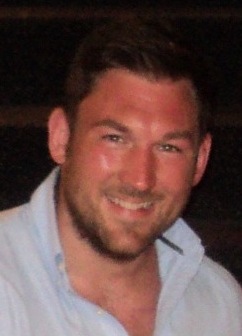 Lewis began work at The Medical Toxicology Unit, London, in 2003. After returning to Loughborough University to complete his undergraduate degree, he returned to work at the MTU in 2005, before undertaking a formal four-year clinical scientist training programme and MSc specialising in analytical toxicology.
Lewis began work at The Medical Toxicology Unit, London, in 2003. After returning to Loughborough University to complete his undergraduate degree, he returned to work at the MTU in 2005, before undertaking a formal four-year clinical scientist training programme and MSc specialising in analytical toxicology.
During this time, he moved to King’s College Hospital, London, where he now works with Viapath Analytics as a registered clinical scientist in the departments of clinical biochemistry and toxicology. He is involved with research and analytical method development/validation using HPLC, and LC-MS(/MS) for a range of toxicology- and biochemistry-related analytes.
He has an interest in the use of TurboFlow technology for high-throughput analysis of drugs and endogenous compounds used in clinical diagnosis, and has published reviews on LC-MS in analytical toxicology, the use of LC-MS in steroid analysis, LC-MS analysis of parathyroid hormone, and on TurboFlow technology, and original research articles on vitamin D metabolites, porphyrins, novel calibration approaches, and clinical audits relating to the TDM of clozapine and norclozapine.
Watch and listen
Our first webinar took place on Thursday 2 July 2015, click below to watch:
The second in our summer series of webinars sees Professor Caroline Ogilvie, a Professor of Cytogenetics, deliver her presentation, titled:
'Prenatal genetic diagnosis - how much information do we want?'.
This talk was hosted by Nick Parkin from our Future Leaders in Innovation Group.
A little about Caroline
 Caroline Ogilvie is a Professor of Cytogenetics at King's College London and a Consultant Clinical Scientist at Guy's and St. Thomas' NHS Foundation Trust.
Caroline Ogilvie is a Professor of Cytogenetics at King's College London and a Consultant Clinical Scientist at Guy's and St. Thomas' NHS Foundation Trust.
In her early scientific career, Caroline worked as a research scientist in the areas of endocrinology and cardiac protein synthesis. She started work at the Genetics Centre at Guy’s & St Thomas’ NHS Foundation Trust in the early 1990s.
Watch and listen
Our second webinar took place on Thursday 9 July 2015, click below to watch:
The final part of our summer series of webinars sees Professor Beverley Hunt, a Professor Haemostasis and Thrombosis, deliver her presentation, titled:
'The challenging management of clots'.
This talk was hosted by Nick Parkin from our Future Leaders in Innovation Group.
A little about Beverley
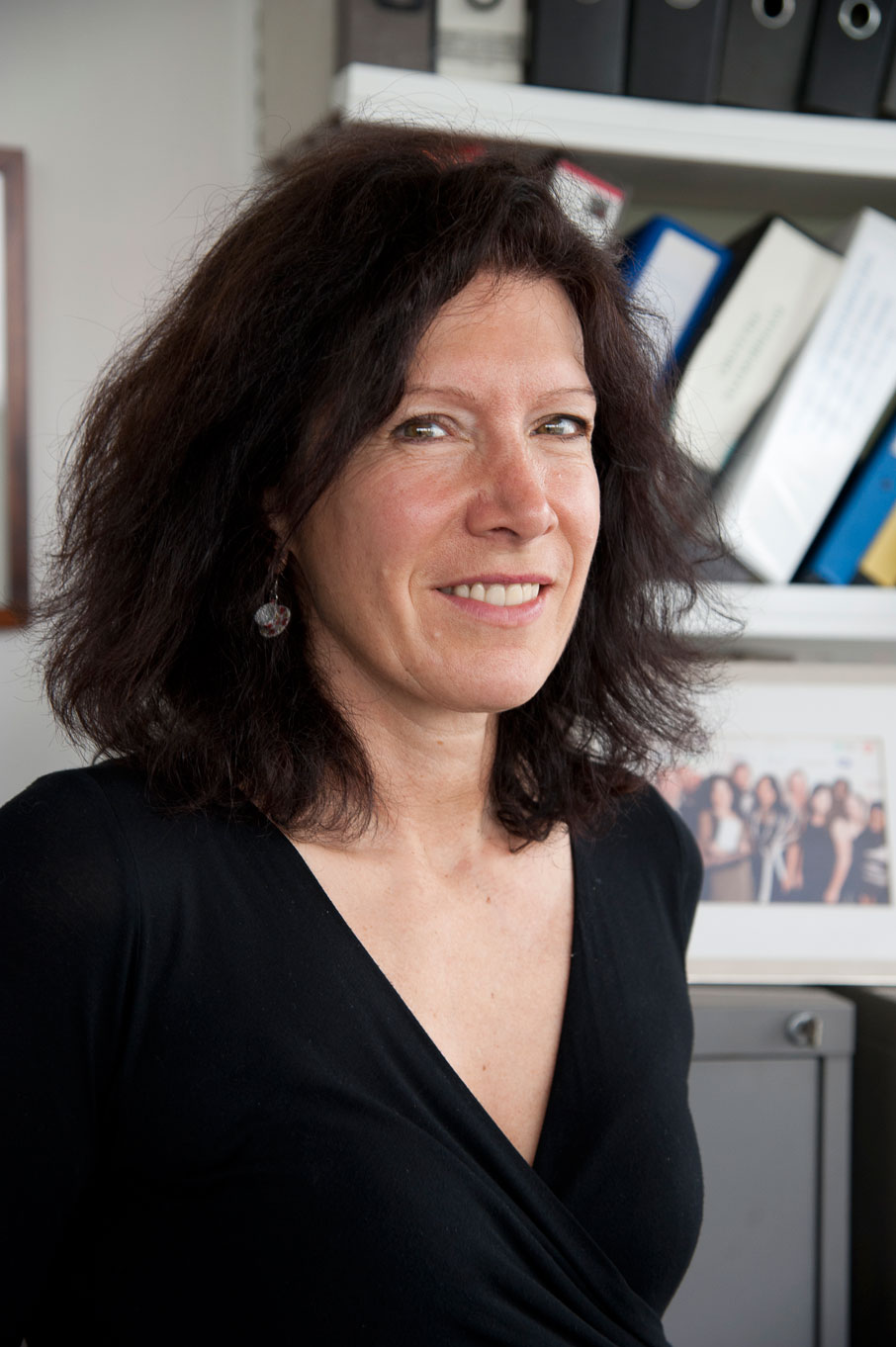 Professor Beverley Hunt is Professor of Thrombosis & Haemostasis at King’s College London and is a Consultant in the Departments of Haematology, Pathology and Rheumatology at Guy’s & St Thomas’ NHS Foundation Trust. She has a large clinical practice, specialising in thrombosis and haemostasis, especially in inherited and acquired thrombophilias, obstetric haematology, and acquired bleeding disorders.
Professor Beverley Hunt is Professor of Thrombosis & Haemostasis at King’s College London and is a Consultant in the Departments of Haematology, Pathology and Rheumatology at Guy’s & St Thomas’ NHS Foundation Trust. She has a large clinical practice, specialising in thrombosis and haemostasis, especially in inherited and acquired thrombophilias, obstetric haematology, and acquired bleeding disorders.
She is also Clinical Lead in Haematological Sciences within Viapath, and sits on the operational board. In England, Professor Hunt sits on the National VTE (venous thromboembolism) board where she is co-lead of the “Patient awareness and experience” work stream. She has published more than 250 peer-reviewed papers, runs a very active research group and is co-founder and Medical Director of ‘Lifeblood: the thrombosis charity’.
Watch and listen
Our final webinar took place on Thursday 16 July 2015, click below to watch:
December 2014 Event
The fourth Innovation Academy took place at the Worshipful Company of Grocers, Grocers' Hall in London and featured a range of thought leaders and expert speakers discussing and presenting the current trends and latest developments in Next Generation Diagnostics (NGD). Among these speakers were Tim Spector, Professor of Genetic Epidemiology at Kings College London and principal twin researcher and Dr Joo Wook Ahn, who discussed the development of Next Generation Sequencing for diagnosis of intellectual disability and other neurodevelopmental disorders.
Our symposiums present a perfect opportunity for those interested in the latest developments in diagnostic medicine to meet and network with key experts in their fields. For further information please contact innovationacademy@viapath.co.uk.
A thank you to our partners for their support in sponsoring this event.
We were delighted to welcome Vivienne Parry OBE, of the 100,000 Genomes Project, to open the fourth Innovation Academy.
Our first session also featured Dr Fokko Zandbergen on “Vascular vitamin K insufficiency: an independent risk factor for vascular calcification and mortality”, Dr Heinz Jungbluth on “Neurodevelopmental, neurodegenerative and neuromuscular disorders due to defects in membrane trafficking and autophagy” and a talk on steroid abuse in sport from Dr Andrew Kicman.
Session 2 brings you the latest advances from our Innovation Fund, including Dr Joo Wook Ahn on the development of Next Generation Sequencing (NGS) based neuro panels, Dr Kevin Ryan on applying nanopore sequencing in pre-implantation genetic diagnosis, Dr David Taylor on combined measurement of biogenic amines and their metabolites in plasma or urine using turbulent flow liquid chromatography-tandem mass spectrometry, Lea Ghataore on changes in serum steroid concentrations in relation to fat distribution and insulin resistance in women with PCOS and last but not least, Simon Handley on the development of a high-resolution mass spectrometric immunoassay (MSIA) for human hepcidin.
Session 2 was followed by a fast-paced 'lightening session' involving voting and prizes! These sessions are the 'finals' of the Richard Hurst Memorial Prize for Excellence in Pathology. Many of our scientific staff, still considered to be in training, presented their 300 word abstract to an expert panel which chose their favoured three pieces of work based on originality of the science and relevance to pathology.
The three finalists each presented their abstracts in a 'lightning session' before Session 3. Our guests chose the winner by voting for their favourite presentation, the winner was announced at the end of the symposium. The top prize of £500 in shopping vouchers was won by Adele Corrigan from our purine lab with the two runners-up, Rachel Curd and Sue Bint each receiving £250 of vouchers. Well done to all!
Our final session welcomed Professor Neil Dalton on targeted metabolomic approach to the diagnosis of inborn errors of metabolism using tandem mass spectrometry, Dr Tony Marinaki’s talk “Circulating plasma micro-RNA - a next generation diagnostic?” and Professor Tim Spector on Twins Omics and personalised medicine.
Speaker Profiles
It gives me great pleasure to welcome you all to our fourth Innovation Academy Scientific Symposium, ‘Next Generation Diagnostics’.
Our programme today builds further on the themes of our 2nd (June ’14) and 3rd (Dec ’13) symposiums which focussed on ‘Personalised Medicine’ and ‘Keeping People Healthy’ respectively.
A key tenet of the NHS Constitution is that we need to work at the limits of science – bringing the highest levels of human knowledge and skill to save lives and improve health. Given this, we need to maintain a clear emphasis on innovation and development across all the disciplines of pathology.
The term ‘Next Generation Diagnostics’ provokes different thoughts for different people. For some it is primarily the opportunity to apply the latest generation of DNA sequencing technologies, and the implications for diagnostic services. For others it is the development of leading clinical and scientific interpretation to drive the move away from ‘average response medicine’ to ‘personalised response medicine’. Alternatively, Next Generation Diagnostics is seen as the development of novel biomarkers to better understand and tackle the progression of chronic disease in a proactive way to extend healthy life years by keeping people healthy.
Today we will explore together how the delivery of ‘Next Generation Diagnostics’ is about more than a test or a therapy. It is about aligning multiple diagnostics, devices, IT and education platforms with the right expertise from an integrated network of skilled professionals, to deliver sustainable treatment pathways for better patient care in the future.
![]() Click the icon above to listen to Dominic introduce the symposium.
Click the icon above to listen to Dominic introduce the symposium.
![]() Click the icon above to listen to Dominic introduce the lightning presentations following session two, with Viapath trainee scientists competing for the Richard Hurst Memorial Prize for Excellence in Pathology.
Click the icon above to listen to Dominic introduce the lightning presentations following session two, with Viapath trainee scientists competing for the Richard Hurst Memorial Prize for Excellence in Pathology.
Biography
Vivienne Parry OBE is a writer and broadcaster. A scientist by training, she is best known for her many programmes on science and medicine for Radio 4, as a former presenter of BBC TV’s iconic science show ‘Tomorrow’s World’ and as a prolific contributor to print media. She has by turn been a columnist for the Times, the Guardian, the News of the World and Woman’s Own as well as an agony aunt for Good Housekeeping.
Her unique claim to fame is having paper published in the Journal of Molecular Biology whilst a columnist of Britain’s biggest tabloid newspaper. Her more respectable hinterland includes being a member of the MRC’s Council, Vice Chair of Council of UCL, extensive work with government and public bodies including being part of the group reviewing devices regulation at the MHRA and facilitating the G8 Summit on dementia.
She has a part time role as head of engagement at Genomics England which is delivering the 100,000 Genomes Project.
![]() Click the icon above to listen to Vivienne Parry discuss the 100,000 Genome project and innovation.
Click the icon above to listen to Vivienne Parry discuss the 100,000 Genome project and innovation.
Biography
Katharine Bates is a Senior Clinical Scientist who works in both the Molecular Pathology and Clinical Biochemistry departmentsat King's College Hospital.
Since her appointment in 2009, she has transferred Biochemistry molecular assays to the purpose built molecular laboratories and has developed and introduced new tests, including a porphyria genetics service to complement the porphyria clinic and specialist porphrin lab at King's College Hospital.
Her current interests are in developing and establishging Next Genereation Sequencing service with particular interest in iron studies, porphyria and the inherited endocrine cancers.
Katharine chaired the opening session featuring invited speakers.
Biography
Fokko Zandbergen is a staff scientist at R&D Group VitaK in Maastricht, the Netherlands, where he develops and manages research projects related to biomarker assay development and health benefits of vitamins (in particular vitamin K) and foods. He received his doctorate in nutrition, metabolism and genomics from Wageningen University in 2006 and was a postdoctoral fellow at the Cardiovascular Division of Harvard Medical School and Brigham and Women’s Hospital from 2006-2008. Here he developed and used in vitro assays to study effects of blood plasma lipids and proteins on inflammation in vascular cells.
From 2008-2013 Dr. Zandbergen supervised a lab at the Marine Biological Laboratory in Woods Hole, USA, where he studied effects of chronic arsenic exposure on metabolism and mechanisms underlying cardiovascular disease.
Vascular vitamin K insufficiency an independent risk factor for vascular calcification and mortality
Abstract
Dietary vitamin K2 intake is inversely associated with cardiovascular disease and mortality. The underlying mechanism is based on the activation of matrix Gla-Protein (MGP), a vitamin K-dependent protein acting as a potent local inhibitor of soft tissue calcification. MGP needs vitamin K to be synthesized in its active form, and during vitamin K insufficiency inactive MGP (known as dp-ucMGP) is formed. Unfortunately, the Western diet does not contain sufficient vitamin K to completely activate MGP. It has been shown that following intestinal absorption, both K1 and K2 are transported to the liver, but only K2 is present in the circulation in low density lipoproteins, and transported to extra-hepatic tissues including the arterial vessel wall. This explains why poor vitamin K2 intake is associated with excess artery calcification and mortality. We have designed and developed a sandwich-ELISA detecting circulating dp-ucMGP, which is regarded as a marker for vascular vitamin K status. Elevated dp-ucMGP levels (so: poor vitamin K status) were found to be predictive for cardiovascular calcification and mortality in patients known to be at risk for calcification as well as in the healthy adult population. Thus far this has been found in 17 successive independent cohorts with long-term follow-up. Based on these findings we have tested the effect of high vitamin K2 intake on vascular health. In an animal model we found that K2 prevents aortic calcification and in calcified animals K2 even resulted in 50% reduction of calcification after 6 weeks. In a human intervention trial we have demonstrated that at 180 micrograms per day of menaquinone-7 (MenaQ7) vascular stiffening improved significantly, not only compared to placebo (between-group analysis) but also compared to baseline (within-group analysis).
Conclusions: vitamin K2 improves vascular health, and dp-ucMGP is a biomarker enabling us to detect who is in need of vitamin K2.
![]() Click the icon above to listen to Dr Zandbergen discuss vitamin K insufficiency.
Click the icon above to listen to Dr Zandbergen discuss vitamin K insufficiency.
Neurodevelopmental, neurodegenerative and neuromuscular disorders due to defects in membrane trafficking and  autophagy
autophagy
Abstract
The recent widespread introduction of next generation sequencing as a diagnostic tool has resulted in the rapid resolution of an increasing number of early-onset neurodevelopmental disorders. Although individually rare, such conditions often share substantial phenotypical overlap reflecting common underlying molecular mechanisms.
Applying a next generation sequencing approach our team has recently identified recessive mutations in EPG5 as the cause of Vici syndrome [OMIM 242840], an early-onset neurodevelopmental disorder with multisystem involvement characterized by callosal agenesis, cataracts, a skeletal and cardiac muscle myopathy, skin hypopigmentation and a combined immunodeficiency. Virtually all Vici syndrome patients develop severe muscle atrophy and microcephaly within the first year of life, suggestive of a superimposed neurodegenerative component. EPG5 encodes ectopic P-granules autophagy protein 5 (epg5), a key autophagy regulator in multicellular organisms involved in autophagosome-lysosome fusion. Vici syndrome shares clinical features and/or molecular mechanisms with a wide range of syndromic multisystem disorders such as Marinesco-Sjoegren (MSS) and Chediak-Higashi syndrome (CHS), primary neuromuscular conditions such as the vacuolar and centronuclear myopathies (CNMs), and adult-onset neurodegenerative disorders including Parkinson’s Disease (PD), ALS and dementia.
These findings suggest that EPG5-related Vici syndrome defines a novel group of neurodevelopmental, neurodegenerative and neuromuscular multisystem disorders due to primary defects in membrane trafficking and autophagy; such disorders have to be considered in patients with suggestive clinical features in whom glycosylation defects, mitochondrial, glycogen or lysosomal storage disorders have been previously excluded. The extensive multisystem involvement in EPG5-related Vici syndrome emphasizes the fundamental importance of normally functioning autophagy in embryonic development and the formation and maintenance of virtually every organ system, in particular skeletal and cardiac muscle and the CNS. Evolution of neurodegenerative features on the background of a neurodevelopmental disorder indicates an intriguing link between neurodevelopment and neurodegeneration, also supported by neuropathological features of ALS in the epg5-/- knockout mouse, and recent implication of other primary autophagy and membrane-trafficking regulators in adult-onset human neurodegenerative disease.
![]() Click the icon above to listen to Dr Heinz Jungbluth's presentation from 5th December.
Click the icon above to listen to Dr Heinz Jungbluth's presentation from 5th December.
Biography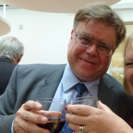
Andrew Kicman started his career at St Thomas’ Hospital in London, in 1980, performing and developing immunoassay screens for anabolic steroids, as part of anti-doping in sport. In keeping with this work, he undertook a part-time PhD, his thesis winning the ‘Susan Tucker prize’ for outstanding young non-medical graduates. Andrew joined King’s College London in 1990, where he subsequently gained the position of Head of R & D in the Drug Control Centre, whilst also lecturing on various aspects of pharmaceutical and forensic science.
In 2009, he launched an MSc in Analytical Toxicology at King’s. Andrew has contributed to two government reviews (the ‘Nandrolone Problem’ for UK Sport and the report on ‘The Anabolic Steroids’ by the ACMD). With his research, he recently offered a potential solution to the so-called ‘poppy seed defence’. Andrew recently became ‘semi-retired’, at the moment remaining active within King’s and also as an associate editor of the journal ‘Drug Testing and Analysis’.
Anabolic Steroids in the Gym; Doping and Detection
Doping with performance-enhancing drugs is a matter of concern to the majority that wish to keep sport clean. The extent of use of these substances in sport, and society as a whole, is a subject of debate, but what is known is that World Anti-doping Accredited (WADA) laboratories report annually adverse and atypical findings between 1 and 2 % of the number of total tests performed worldwide. The large majority of these findings are invariably within the class of anabolic agents. The results indicate, year after year, that testosterone is the most widely misused anabolic steroid, it being more analytically challenging to prove a doping offence has occurred due to the administration of a substance that is also produced naturally within the body. The measurement of the urinary testosterone to epitestosterone ratio remains the established approach for detection of doping with testosterone, including a screen based on a Bayesian statistical approach, where each individual acts as his own reference (‘Athlete Biological Passport’). Even so, the co-administration of epitestosterone with testosterone can normalise the T/E ratio, in which case the longitudinal profiling of testosterone in serum may be a helpful way forward.
![]() Click the icon above to listen to Dr Andrew Kicman discuss screening for anabolic steroids.
Click the icon above to listen to Dr Andrew Kicman discuss screening for anabolic steroids.
Following a fascinating talk from Dr Kicman at the Innovation Academy, Robert Dunn a member of our Future Leaders in Innovation Group at Viapath (as well as a keen runner and cyclist!) caught up with him to ask some wide ranging questions from the detection of doping in sport, to career-based questions. Please click below to read the full interview.
Biography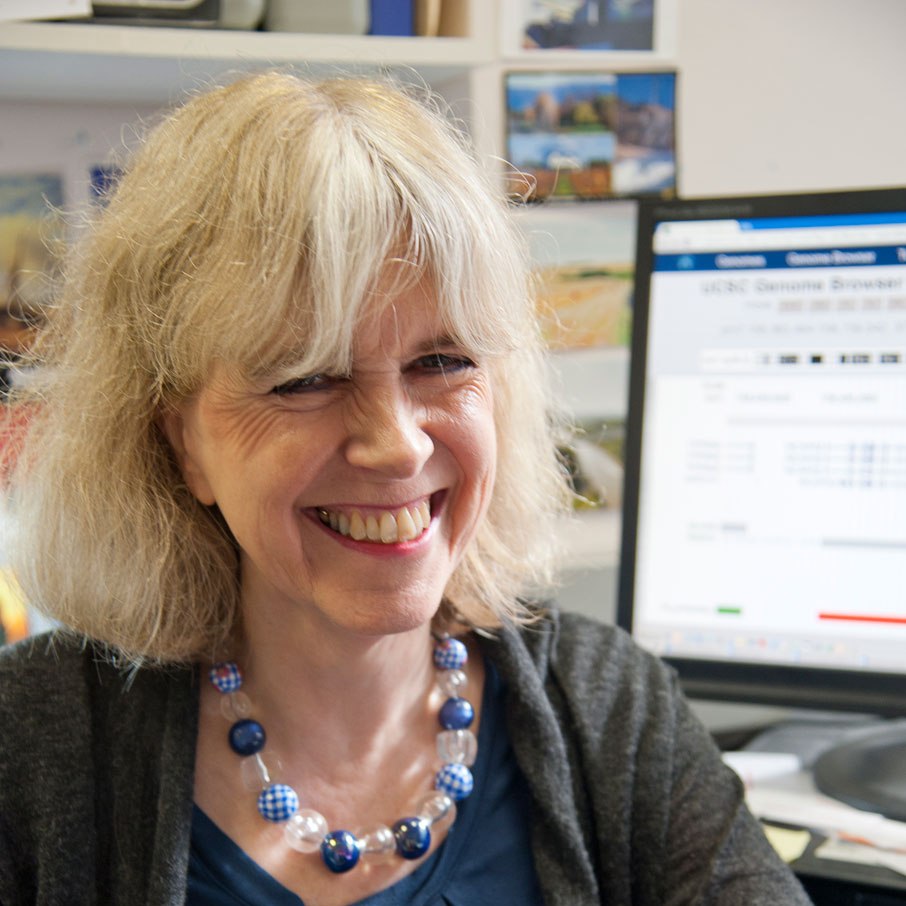
Caroline Ogilvie is a Professor of Cytogenetics at King’s College London, and a Consultant Clinical Scientist at Guy’s & St Thomas’ NHS Foundation Trust.
In her early scientific career, Caroline worked as a research scientist in the areas of endocrinology and cardiac protein synthesis. She started work at the Genetics Centre at Guy’s & St Thomas’ NHS Foundation Trust in the early 1990s.
Caroline chaired the second session which featured updates on projects sponsored by Viapath's Innovation Fund.
![]() Click the icon above to listen to Professor Caroline Ogilvie introduce the second session.
Click the icon above to listen to Professor Caroline Ogilvie introduce the second session.
![]() Click the icon above to listen to the Q&A's for the second session speakers.
Click the icon above to listen to the Q&A's for the second session speakers.
Biography
Joo Wook Ahn has a long track record of developing clinical diagnostics using new and emerging technologies. Previously, he has developed array CGH technology to replace traditional karyotyping for children with intellectual disability and congenital abnormalities. This has resulted in a more than doubling of the diagnosis rate for this group of patients.
More recently, he has been concentrating on applying next-generation sequencing technologies to this cohort, to further improve our ability to elucidate the genetic mechanisms by which these conditions occur.
Development of NGS for diagnosis of intellectual disability and other neurodevelopmental disorders
![]() Click the icon above to listen to Joo Wook's presentation on next generation sequencing.
Click the icon above to listen to Joo Wook's presentation on next generation sequencing.
Biography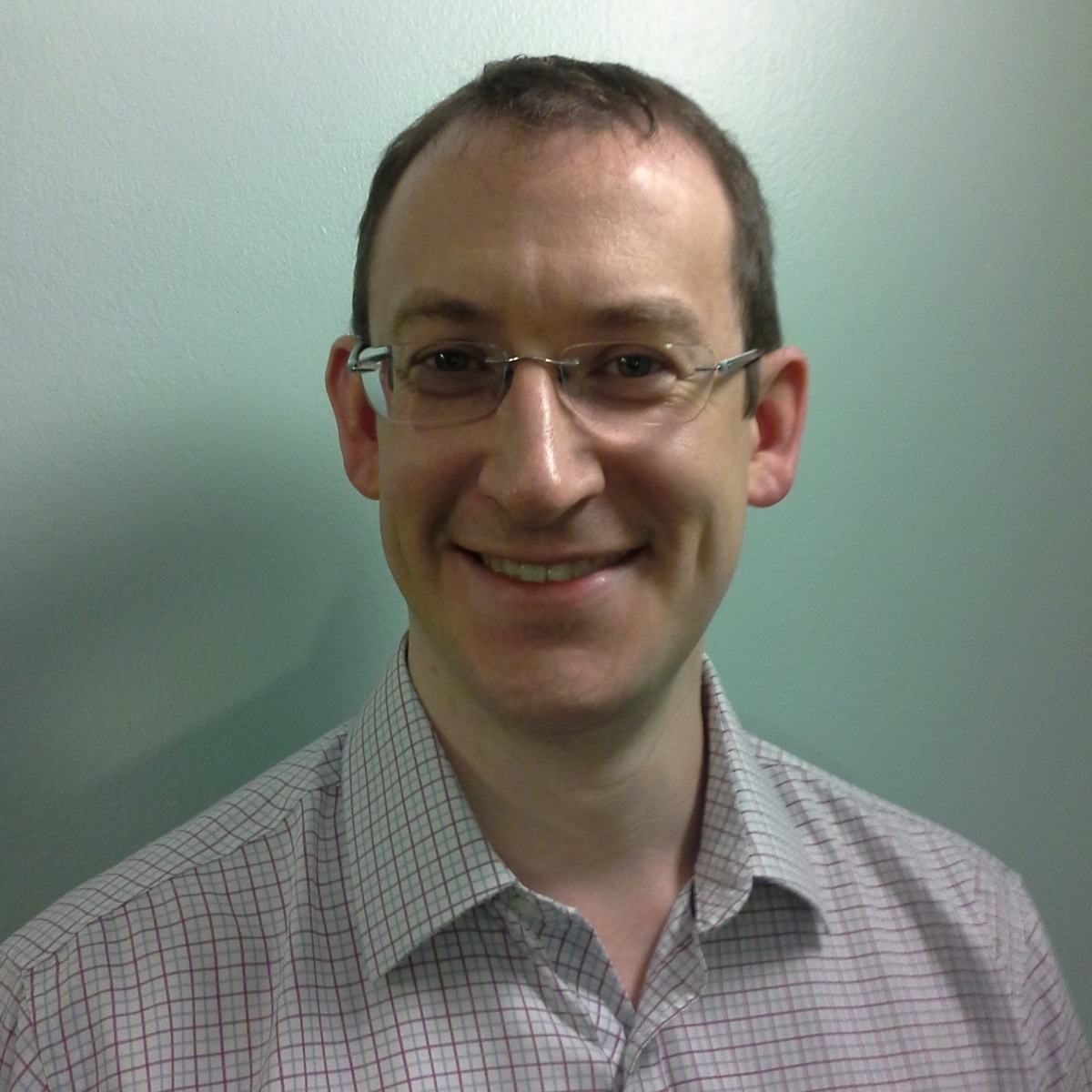
Kevin Ryan joined Viapath last year and was appointed as a Bioinformatician in the Genetics laboratories at Guy’s Hospital. Previously Kevin was based at the University of Nottingham where he worked as a Postdoctoral research scientist. Here his research involved setting up an RNA-seq NGS analysis pipeline to explore the role of different growth promoters on gene expression networks regulating muscle growth and metabolism.
During this time his work involved the development of analysis systems to discover novel gene associations based on their temporal expression profiles. Originally trained within the fields of molecular biology and nutritional biochemistry, Kevin completed his PhD in 2005 at the University of Nottingham. In the last year he has built and implemented a new NGS diagnostic pipeline for inherited disorders and is currently further developing the pipeline as well as exploring new innovative sequencing systems such as the nanopore single molecule strand sequencing technology from ONT.
The Nanopore MinION - Miniaturising DNA sequencing for longer reads
Abstract
This year Oxford Nanopore released as part of an early access programme, their latest third-generation single-molecule sequencing platform the MinION™. The MinION early access programme (MAP) offered a chance for the genetics and bioinformatics communities to test this latest long read sequencing system and to contribute to its development prior to general release.
The MinION is a high-throughput DNA sequencer, the size of a USB stick. It utilises Oxford Nanopore’s innovative ‘strand sequencing’ chemistry, which involves an enzyme-mediated approach to thread DNA through a specialised protein nanopore enabling sequencing in ‘real-time’. This method of sequencing boasts the capacity to generate read lengths of many tens of kilobases which is two orders of magnitude greater than the read lengths generated by current short read sequencing platforms such as Illumina.
Furthermore Nanopore technology offers the possibility of sequencing DNA at a single molecule level without the need for amplification, which can introduce errors in the generated sequences and variable coverage across the genome. A team from Guy’s Genetics successfully applied to join MAP in order to explore its application to the human clinical field. Over the course of this talk I will discuss our experience of being part of the crowd-sourcing development process, which has ensured the continued evolution of the MinION technology and the associated analysis software. I will also discuss its potential to the clinical field and the challenges that remain for this innovative sequencing platform to meet the requirements of clinical diagnostics.
![]() Click the icon above to listen to Kevin Ryan's presentation on miniaturising DNA sequencing whilst obtaining longer reads.
Click the icon above to listen to Kevin Ryan's presentation on miniaturising DNA sequencing whilst obtaining longer reads.
Biography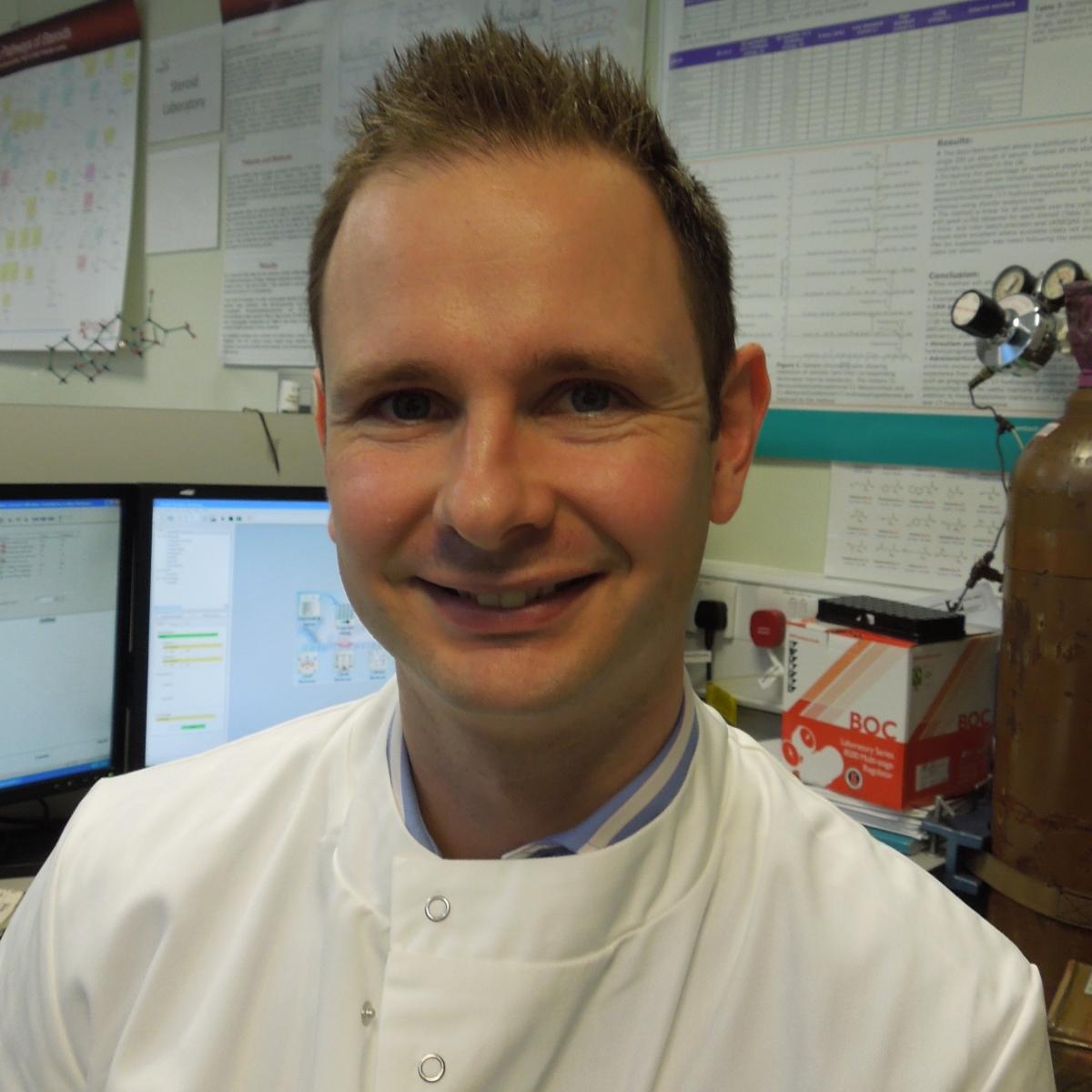
David has been working at King’s College Hospital since 2009, initially as a regionally funded Trainee Clinical Scientist, completing an MSc in Clinical Biochemistry in 2011. He holds a BSc and PhD in Biochemistry, both from the University of Leeds.
Since gaining registration as a Clinical Scientist with the Health and Care Professions Council, his daily work has encompassed the development and implementation of new liquid chromatography tandem mass spectrometry methods.
David has a particular interest in endocrine testing, including working on the development of a serum steroid panelling service and is a member of the Association for Clinical Biochemistry and Laboratory Medicine and the Society for Endocrinology.
Combined measurement of biogenic amines and their metabolites in plasma or urine using turbulent flow liquid chromatography-tandem mass spectrometry
Phaeochromocytoma and paraganglioma are rare catecholamine-producing tumours (PPGLs) of the adrenal medulla and extra-adrenal sympathetic chain, with an annual incidence of 2–8 per million of the population. Hypertension from catecholamine excess (adrenaline and noradrenaline) typically presents with headaches, palpitations and excessive sweating, although tumours may be detected incidentally by imaging. At least 10% of PPGLs are malignant (often producing dopamine), whilst eleven genes have been linked to familial disease. The detection of PPGLs is important, as they represent a potentially treatable cause of secondary hypertension. Until recently, biochemical detection of PPGLs was based on catecholamine measurement in urine and plasma together with urinary measurement of the O-methylated metabolites of adrenaline, noradrenaline and dopamine (metadrenaline, normetadrenaline and 3-methoxytyramine, respectively). In all cases, measurement is performed by HPLC with electrochemical detection, following laborious sample preparations including overnight solid phase extraction. Recently a sensitive and specific liquid chromatography-tandem mass spectrometry (LC-MS/MS) method for the measurement of metadrenaline, normetadrenaline and 3-methoxytyramine in plasma was introduced into the laboratory. This method incorporates online TurboFlow sample extraction followed by analytical chromatography prior to MS detection. The introduction of this test represents the first step in an Innovation Academy project to transfer all catecholamine and metabolite measurements in urine and blood to the LC-MS/MS in 2015. This will modernise the biogenic amine service at Viapath, simplifying sample preparation whilst producing more reliable and robust mass spectrometry results from a single instrument.
![]() Click the icon above to listen to David Taylor's presentation.
Click the icon above to listen to David Taylor's presentation.
Biography
Chief Biomedical Scientist, working as deputy in the Steroid Laboratory, urine steroid profiling service at King’s College Hospital since 2008.
Changes in serum steroid concentrations in relation to fat distribution and insulin resistance in women with PCOS
Abstract
Polycystic ovarian syndrome (PCOS) is a heterogeneous disorder affecting 5-10% of women of reproductive age. Hyperandrogenism plays a central role in the pathology of PCOS and is associated by factors such as insulin resistance and obesity. The aim of the project was to assess the effect of insulin resistance and fat distribution on steroid metabolism.
The cross-sectional study recruited 20 PCOS women and 20 matched normal women, aged 18-45 years. Fat distribution was assessed by waist circumstance, skin fold measurements and body mass index. Insulin resistance was measured using Homeostatic Model Assessment (HOMA-IR). Subjects underwent glucose tolerance test (GTT) after an overnight fast. Blood samples were collected at baseline, 15, 30, 60, 90 and 120 min and a serum steroid panel was measured using LC-MS/MS (TSQ Vantage by Thermo Fisher Scientific).
Baseline measurements showed that corticosterone (p=0.04), 17-hydroxypregnenolone (17DP) (0.03) and cortisol (p=0.03) were higher in the PCOS group compared to the control group. Women with high insulin had relatively higher baseline DHEAS (p=0.05) and 17DP response (p=0.06) after OGTT. The study showed fat distribution positively correlated with insulin resistance in PCOS and control groups. There was higher insulin resistance in obese group whether with PCOS or not. Androgen levels were more pronounced in subjects with higher fat distribution as opposed to insulin resistance. Therefore, it is likely that insulin driven alterations in steroid metabolism are more of an affect of fat distribution than of PCOS.
![]() Click the icon above to listen to Lea Ghataore's presentation.
Click the icon above to listen to Lea Ghataore's presentation.
Biography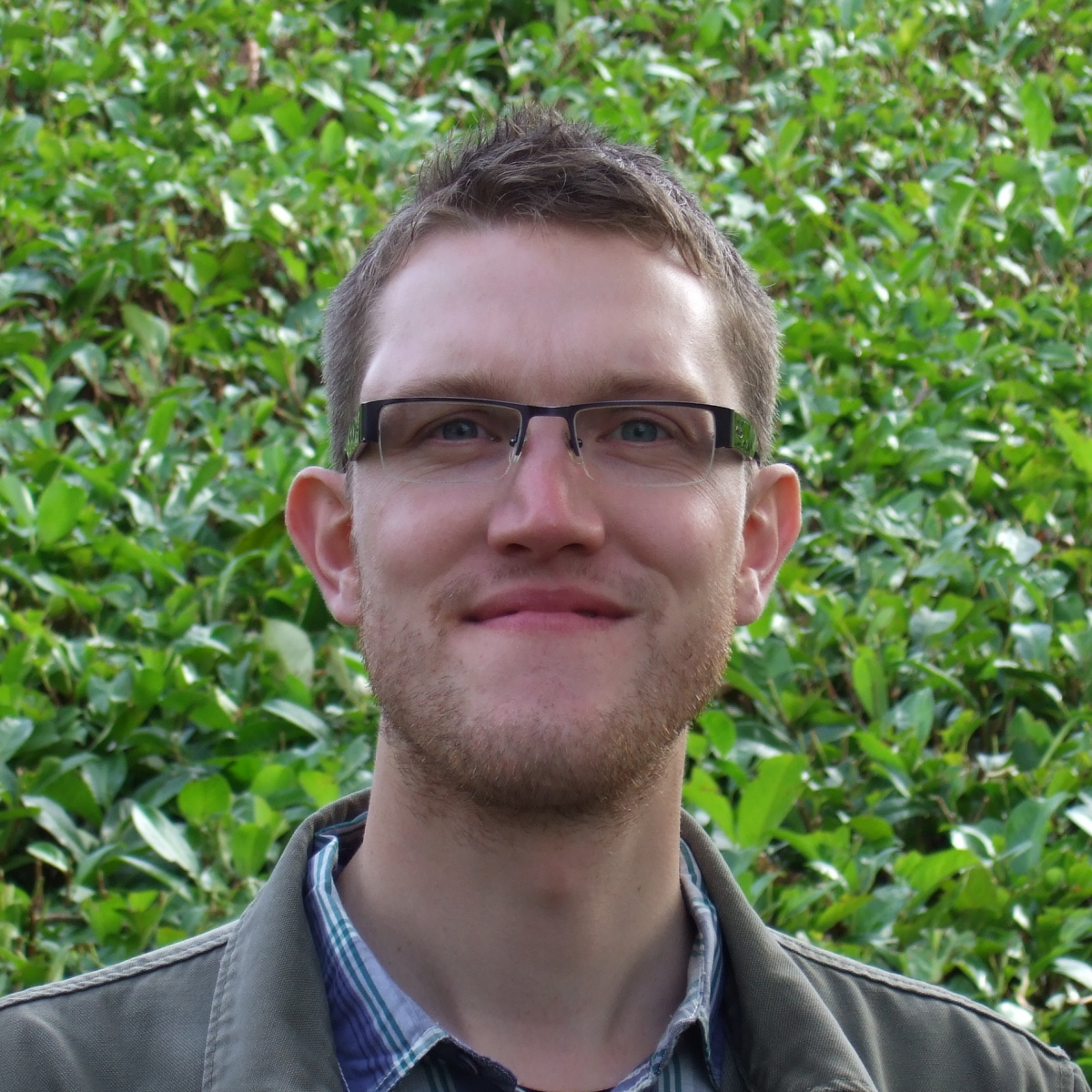
Simon Handley is a Senior Clinical Scientist at the Toxicology Unit, King’s College Hospital NHS Foundation Trust, London. He has achieved a BSc in Biological Sciences, MSc in Toxicology, MSc in Analytical Toxicology, and is currently studying part-time for a PhD. Simon is a member of the Royal Society of Chemistry, and is on the UK Register of Toxicologists. Particular interests include the therapeutic drug monitoring of antipsychotics, drugs of abuse analysis, analytical methods, in particular mass-spectrometry, and trends in the compounds used in fatal poisonings.
Development of a high-resolution mass spectromi immunoassay (MSIA) for human hepcidin
Abstract
Hepcidin, a 25 amino acid polypeptide, is the master regulator of systemic iron homeostasis by inducing the degradation of ferroportin. Measurement of plasma hepcidin-25 may be a promising marker for the diagnosis of iron related disorders, in particular the differential diagnosis of iron deficient anaemia from anaemia of chronic disease. Hepcidin-25 measurement may also help guide the treatment of anaemia with iron supplementation, erythropoietin or with novel therapies targeted at antagonising or inducing hepcidin synthesis. Truncated isoforms of hepcidin-25 (hepcidin-20, -22, and -24) have been identified, but their role in vivo has not been elucidated. A number of methods are available for the measurement of hepcidin-25. However, poor agreement between methods has been reported. Mass spectrometric immunoassay (MSIA) is an alternative to classical immunoassay that has already been used to measure a number of important proteins, and has been shown to be selective and highly sensitive. The aim of this study is to develop a novel MSIA method for the measurement of hepcidin-25 and its isoforms.
Plasma was diluted with internal standard solution (hepcidin-25-13C18,15N3, in HBS-EP buffer), and captured onto a monolithic microcolumn activated with an anti-hepcidin antibody fixed in a Disposal Automated Research Tip (DART). The DARTs were washed with phosphate buffered saline, then deionised water before elution of hepcidins with acetonitrile:deionised water (33+67, v/v), containing 0.4 % (v/v) trifluoroacetic acid. Tip eluates were analysed using an ACE C18 analytical column (100 x 2.1 mm, 3 µm). Detection was by high-resolution mass spectrometry, using positive heated-electrospray-ionisation in full-scan mode (400-1000 m/z). The 3+, 4+, and 5+ charge states of each analyte were summed to produce extracted ion chromatograms. Calibration was linear for all analytes (R2 > 0.98).
The proposed method is simple, and easily automated. MSIA is an ideal workflow solution for analytes that are present at low concentrations, and where interference from similar compounds is likely with conventional immunoassays.
![]() Click the icon above to listen to Simon Handley's presentation on developing an MSIA.
Click the icon above to listen to Simon Handley's presentation on developing an MSIA.
Biography
Adele Corrigan joined the Purine Research Laboratory in 2009. She currently works as a research assistant and is undertaking a PhD with King’s College London, investigating the pharmacogenetic basis of platinum drug toxicity.
AQP8 and C7orf57 polymorphisms as novel pharmacogenetic markers of platinum drugs toxicity
![]() Click the icon above to listen to Adele Corrigan's lightning presentation.
Click the icon above to listen to Adele Corrigan's lightning presentation.
Biography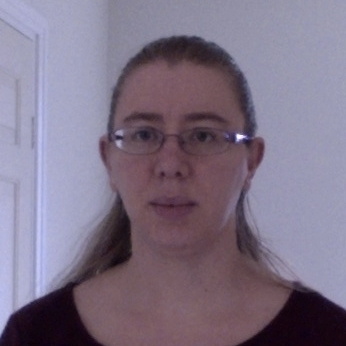
After completing a PhD in Biochemistry in 2008 Rachel took up a position in the biotechnology industry. Rachel came to Viapath in 2011 as a trainee on the Modernising Scientific Careers Scientist Training Programme (STP) specialising in Clinical biochemistry.
Whilst based at Guys’ and St Thomas’ hospital, Rachel also undertook rotations at Kings’ College Hospital and University Hospital Lewisham, and completed an MSc in Clinical Sciences (Blood Sciences) achieving Distinction in 2014. Rachel is a registered Clinical Scientist with the Health and Care Professions Council and is a member of the Thames Audit Committee. Rachel currently works in the Biochemical Sciences Department at St Thomas’ hospital.
Development of a rapid liquid chromotography tandem mass spectrometry dried blood spot screening test to exclude classical galactosaemia in neonates
![]() Click the icon above to listen to Rachel Curd's lightning presentation.
Click the icon above to listen to Rachel Curd's lightning presentation.
Biography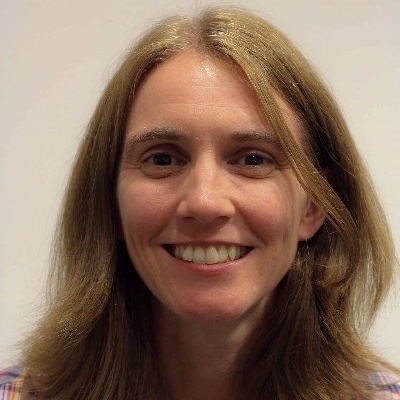
I started working in the Cytogenetics Department at Guy’s Hospital as a grade-A clinical scientist trainee in the year 2000. I am now a registered Clinical Scientist and am currently working towards my FRCPath Part 2. I am primarily involved in array Comparative Genomic Hybridisation (aCGH), Preimplantation Genetics Diagnosis (PGD) and Fluorescence In Situ Hybridisation (FISH) and have published and co-authored several papers detailing our work. I have played a key role in the introduction of prenatal aCGH into the routine service and have recently been involved in the introduction of aCGH for PGD.
Outside of work I am a keen runner. I recently competed in the World Quality Day challenge and am hoping to compete in the London marathon next year, provided I make it to the start line!
PGD for chromosome rearrangements - a novel strategy
![]() Click the icon above to listen to Sue Bint's lightning presentation.
Click the icon above to listen to Sue Bint's lightning presentation.
Biography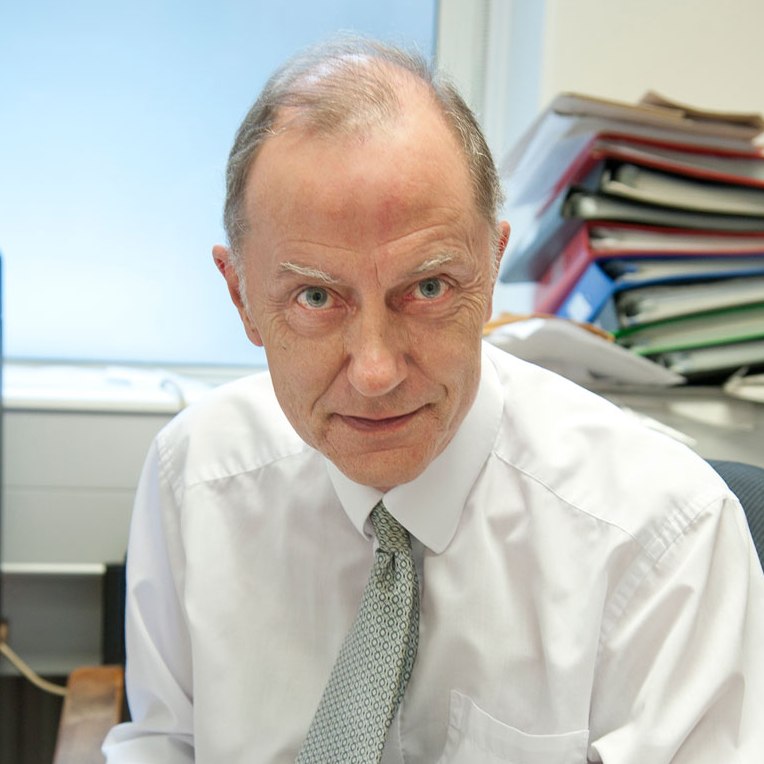
Professor Roy Sherwood is Consultant Clinical Scientist and Scientific Director of Viapath. He trained at the Royal Sussex County Hospital, Brighton. In 2013 he became Professor of Clinical Biochemistry at King’s College London. He has an interest in biomarkers in liver, gastrointestinal and cardiovascular disease in particular.
He has built up an interest in tumour markers associated with endocrinology and neuroendocrine tumours and the laboratory at King’s will soon be offering a comprehensive service for these. He has a BSc in Clinical Biochemistry from Salford University, and MSc in Clinical Biochemistry from Surrey University and a DPhil from Sussex University.
Roy chaired the third session which featured speakers at the invitation of the recently retired Professor Swaminathan.
![]() Click the icon above to listen to Professor Roy Sherwood introduce the third session.
Click the icon above to listen to Professor Roy Sherwood introduce the third session.
Biography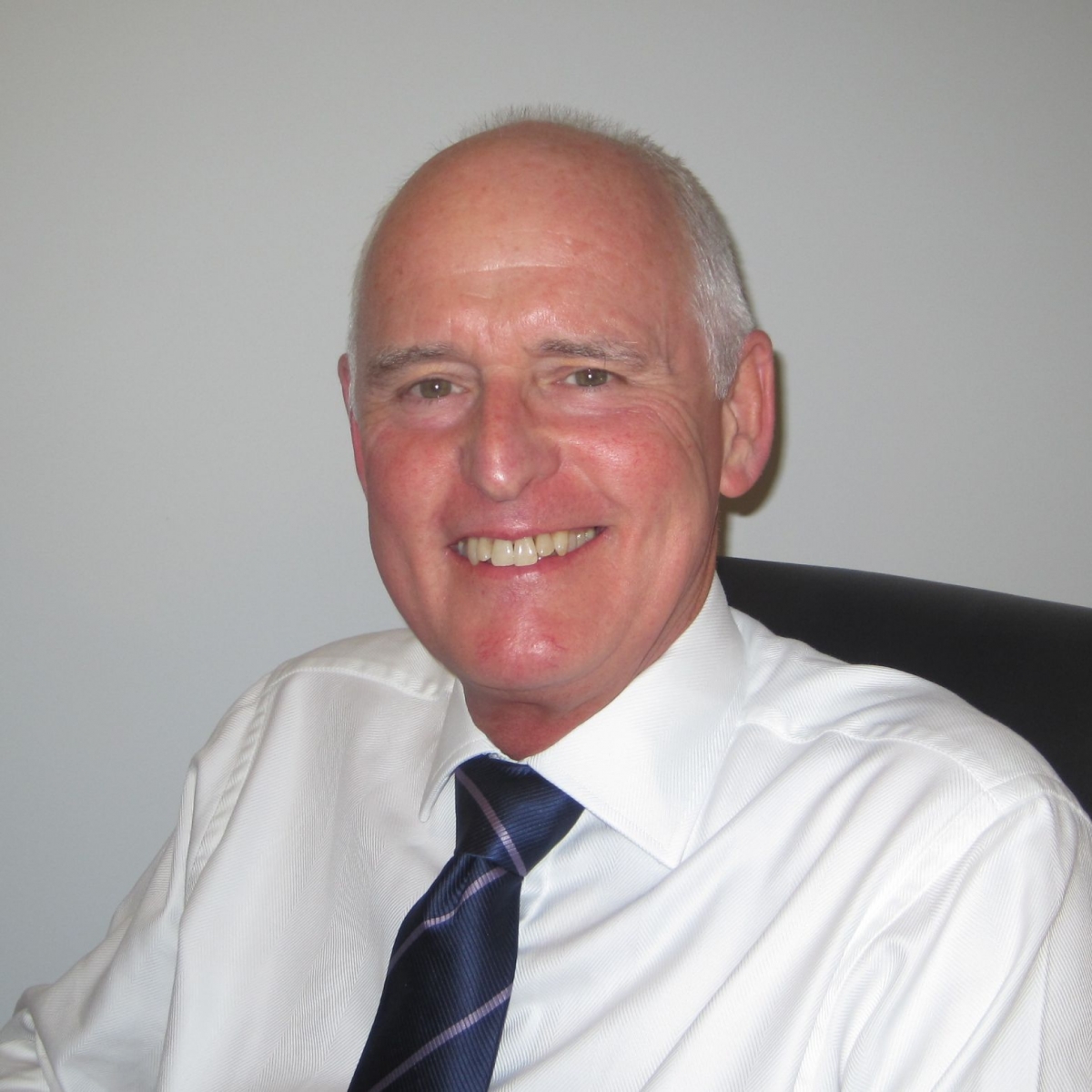
After obtaining a degree in Natural Sciences from Cambridge University in 1975, Neil joined the Department of Clinical Chemistry at Guy’s Hospital. Following an eccentric career path, Neil is now the Professor of Paediatric Biochemistry at King’s College London, Director of the WellChild Laboratory at the Evelina London Children’s Hospital, and a founding director of SpOtOn Clinical Diagnostics. Neil was part of the original Guy’s Hospital team that established a centralised PKU screening service for South East England and developed a clinical laboratory service for the investigation of inherited metabolic disease.
The WellChild Laboratory introduced the first underivatised tandem mass spectrometry newborn dried blood spot (DBS) screening for PKU and was instrumental in the UK MCADD screening trial and national policy. More recently, tandem mass spectrometric methods for both newborn DBS sickle cell disease and ante-natal haemoglobinopathy screening have been developed in the WellChild Laboratory. Neil is a member of the ERNDIM Scientific Advisory Board and established the DBS acylcarnitine scheme. Neil and his team continue to exploit the unique analytical opportunities offered by tandem mass spectrometry, particularly with regard to multiplexed assays, not only for the diagnosis and therapeutic monitoring of inherited metabolic diseases, but also for the metabolomic and proteomic investigation of patient cohorts.
Targeted metabolomic approach to the diagnosis of inborn errors of metabolism using tandem mass spectrometry
Abstract
The role of the inherited metabolic disease laboratory is to provide accurate, rapid, and cheap screening and confirmatory diagnostic tests for an expanding range of rare disorders with common clinical presentations. The objective must be to develop generic diagnostics that maximise disease coverage while minimising costs, laboratory logistics, and the requesting dilemmas of clinicians.
The intrinsic analytical specificity of multiple reaction monitoring acquisition and quantitative precision of stable isotope dilution electrospray tandem mass spectrometry (TMS) has placed the technology at the forefront of bioanalysis. However, the obvious impact of TMS on newborn dried blood spot screening for inherited metabolic diseases (IEM) has not been emulated in the routine diagnostic testing for IEM, which remains dominated by plasma/urine amino acid and urine organic acid analyses and an increasing plethora of disease specific tests.
In research terms, primary metabolomic screening using mass spectrometry (MS) is performed in MS mode, failing to capitalise on the sensitivity and specificity of TMS. In contrast, a targeted metabolomic approach using TMS presents an opportunity to rationalise the clinical diagnosis of IEM. The strategy has been to develop validated analytical methods for amino acids, acylcarnitines, organic acids, purines and pyrimidines, and disease specific tests and then multiplex into a single assay: essentially an IEM metabolite analyser.
The recent introduction of an API6500 Q trap instrument, with increased linear range and true positive-negative ion switching, has further enhanced the diagnostic and research potential of this approach to include novel infection, specific organ function, specific organ function, and tumour biomarkers.
The challenges limiting introduction of routine clinical diagnostic multiplexed assays are obvious; calibration, quality control, technical competence, and interpretation skills. Large scale research metabolomic studies have not only served to emphasise these challenges but also provided a platform to test solutions and demonstrate how analytically robust modern TMS platforms can be.
![]() Click the icon above to listen to Professor Neil Dalton's presentation from the Innovation Academy.
Click the icon above to listen to Professor Neil Dalton's presentation from the Innovation Academy.
Biography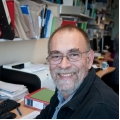
Dr Tony Marinaki is a Consultant Clinical Scientist in the Purine Research Laboratory, Biochemical Sciences, Viapath. His interests have centred on pharmacogenetics and personalised medicine. He is very grateful to Prof. Swaminathan for opening his eyes to the potential of circulating nucleic acids as biomarkers of disease.
Circulating plasma micro-RNA - a next generation diagnostic?
Abstract
MicroRNAs (miRNAs) are a small non-coding RNAs which post-transcriptionally regulate gene expression. Expression levels are dysregulated in numerous pathological states including cancer, cardiovascular disease and diabetes. MicroRNAs are readily detectable in the circulation due to their stability and levels in serum or plasma have potential as diagnostically useful biomarkers.
In a pilot study completed earlier this year, we showed that circulating levels of miR-132 were significantly decreased in patients with gestational diabetes mellitus at 24-30 weeks gestation compared to case controls (P<0.001). Our results raise the possibility of an alternative test to an oral glucose tolerance test for the diagnosis of gestational diabetes.
![]() Click the icon above to listen to Dr Tony Marinaki discuss his and Professor Swaminathan's work on micro-RNA.
Click the icon above to listen to Dr Tony Marinaki discuss his and Professor Swaminathan's work on micro-RNA.
Biography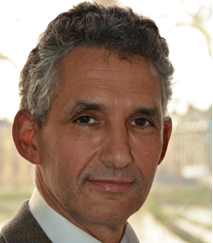
Tim Spector is a Professor of Genetic Epidemiology and Director of the TwinsUK Registry at Kings College, London. He trained in rheumatology and epidemiology, but moved into genetic epidemiology in 1992 when he founded the UK Twins Registry, with currently 13,000 twins, which is one of the richest collections of genotypic and phenotypic information on twins worldwide.
He is president of the International Society of Twin Studies and collaborates with over 120 centres worldwide. Its breadth of research has demonstrated the genetic basis of a wide range of common complex traits, many previously thought to be mainly due to ageing and environment. Through GWAS studies his group have found over 400 novel gene loci in over 30 disease areas. He has published over 700 research articles and is ranked as being in the top 1% of the world’s most published scientists by Reuters. He is holder of a prestigious European Research Council senior investigator award to study epigenetics as well as many other awards and grants. He is the author of several books, focusing on osteoporosis, genetics and epigenetics and has been featured widely in the media.
Large Scale Integrated Omic Twin studies for commen complex traits and personalised medicine
Abstract
The Department of Twin Research (DTR) has embarked on a large-scale multi-omic study of 5,000 adult twins. This includes a number of sub-studies used to explore the heritability, QTLs and age relationships of different omics. This includes (EpiTWIN) www.epitwin.eu whose aim of this study is to use whole genome methylation sequencing to improve our understanding of how genetic and environmental factors can impact on epigenetics and how DNA methylation pattern variation can affect a wide range of complex traits. The same individuals are tested using an integrated omics approach including - the Multiple Human Tissue Expression Resource (MuTHER) and the EU EuroBats project providing RNA array and sequencing, and the UK10K project providing DNA whole genome sequence and exomes. In addition we have analysed metabolomics (LCMS) , glycomics and gut microbiomes (16s) on the same twins.
We also investigate the DNA methylation and expression patterns within a number of different tissues including blood, skin, adipose and different regions of the brain. Examples of recent integrated Omic analyses like prediction of age, pain sensitivity, cancer, depression and diabetes will be presented.
![]() Click the icon above to listen to Professor Tim Spector discuss his work in twin research and pay tribute to Professor Swaminathan.
Click the icon above to listen to Professor Tim Spector discuss his work in twin research and pay tribute to Professor Swaminathan.
The speakers that feature in this session are all at the invitation of Professor Swaminathan on the occassion of his retirement
Professor Swaminathan graduated from University of Ceylon (MBBS) in 1967. In 1969 he moved to the UK and began a PhD in Aberdeen. After completing his PhD, he took up the post of Registrar in the Department of Chemical Pathology in Leeds and later became Lecturer in Chemical Pathology. He completed his MSc in Clinical Biochemistry in 1976 and three years later he completed his MRCPath. He gained consultant status in 1981.
In 1983 he was appointed Reader and Head of Department for Chemical Pathology at the Chinese University of Hong Kong. During his time in Hong Kong he established Chemical Pathology teaching, started a new department in the Prince of Wales Hospital as well as developing the first training programme in Clinical Biochemistry to medical graduates and clinical biochemists subsequently leading to the first government supported Chemical Pathologist post in Hong Kong. Between 1986-1989 he was the President of Hong Kong Society of Clinical Chemistry and hosted the 5th Asian Pacific Congress in Clinical Chemistry. During 1990 he was instrumental in the establishment of the College of Pathologists in Hong Kong. In 1991 he became Professor of Clinical Biochemistry at the United Medical and Dental School in London. He was appointed as Honorary Consultant at Guy’s Hospital and subsequently Head of Department with the merger of Guy’s and St Thomas’ Hospitals until 2006.
Teaching has been the passion of Prof Swaminathan throughout his career and he has extensive experience in training both medical students and clinical scientists. He has actively led training and supervised several projects in his research area:
- Nutrition and bone metabolism - investigating the role of nutritional factors, especially sodium intake in the pathogenesis of osteoporosis.
- Sodium intake and sodium transport inhibitors, investigating the role of sodium intake in the pathogenesis of hypertension and in most recent years.
- Use of plasma nucleic acids in diagnosis.
In 2005 he organised the International Symposium on Circulating Nucleic Acids in Plasma/Serum. He has acted as a mentor for Clinical Scientists and Registrars within his profession. For nine years Prof Swaminathan was the course organiser/lead for the Intercalated BSc Clinical and Molecular Endocrinology, he also organised the MSc Clinical Biochemistry for many years. He has published over 400 peer reviewed articles in his area of expertise.
Professor Swaminathan has been a member of several Specialist Advisory and Scientific Committees and was advisor to WHO (SE Asia division) on clinical laboratory standards.
He was a chairman of examiners for MBBS for Guy's, Kings and St Thomas’ Hospitals Medical School and MSc in Clinical Biochemistry (University of London). He had responsibilities including roles of external examiner for MBBS for eight medical schools, under graduate / post graduate taught programmes at several institutions, examiner for MD candidates and assessor for MRCPath.
Although now retired he remains tireless in his charity work having climbed Mount Kilimanjaro in 2012 and more recently cycling from Land’s End to John O’Groats raising money for Oru Paanai, a charity in Sri Lanka which helps to provide a meal for starving children. In November 2014 he completed a sky dive at 15,000ft in New Zealand.
His professional expertise, friendship, mentorship, advice and guidance have left indelible footprints in the career paths of many members of staff.
You will be greatly missed Prof Swaminathan!
![]() Click the icon above to listen to the announcement for the winner of the Richard Hurst Memorial Prize, tributes to Professor Swaminathan and the closing of the symposium.
Click the icon above to listen to the announcement for the winner of the Richard Hurst Memorial Prize, tributes to Professor Swaminathan and the closing of the symposium.
Event round-up
A series of podcasts from our Future Leaders in Innovation Group to walk you through the December 2014 Innovation Academy symposium, introduce you to the speakers and discuss the presentations.
Check back to this page for further instalments below.
Episode 1 (24:01)
Nick Parkin takes us through this podcast with an interview between himself and Dr Dominic Harrington, who explains the inception and the concept of the Innovation Academy.
Felicity Lapper speaks to Vivienne Parry OBE who is Head of Public Engagement at Genomics England - the body responsible for delivering the groundbreaking 100,000 Genomes project, Felicity also gives us her thoughts following the interview.
And finally, Ashwenia Krishnan speaks to Dr Fokko Zandbergen, a renowned Vitamin K expert from Maastricht University in the Netherlands.
June 2014 Event
Our third Scientific Symposium was on 27 June 2014 at London's Apothecaries Hall. Speakers explored the topic of 'Keeping People Healthy' and the event kicked off with Christopher Baker MBE setting the scene.
 Session 1, chaired by Professor Roy Sherwood, includes talks on Prevalence and risk factors for functional vitamin B12 deficiency in patients with Crohn's disease from Dr Peter Irving, Association between metabolic bone disease and cardiovascular disease, by Dr Geeta Hampson MD and a presentation from Professor Beverley Hunt on Excitement in the thrombosis world.
Session 1, chaired by Professor Roy Sherwood, includes talks on Prevalence and risk factors for functional vitamin B12 deficiency in patients with Crohn's disease from Dr Peter Irving, Association between metabolic bone disease and cardiovascular disease, by Dr Geeta Hampson MD and a presentation from Professor Beverley Hunt on Excitement in the thrombosis world.
Speaker: Professor Beverley Hunt
Professor Beverley Hunt is Professor of Thrombosis & Haemostasis at King’s College London and is a Consultant in the Departments of Haematology, Pathology and Rheumatology at Guy’s & St Thomas’ NHS Foundation Trust. She has a large clinical practice,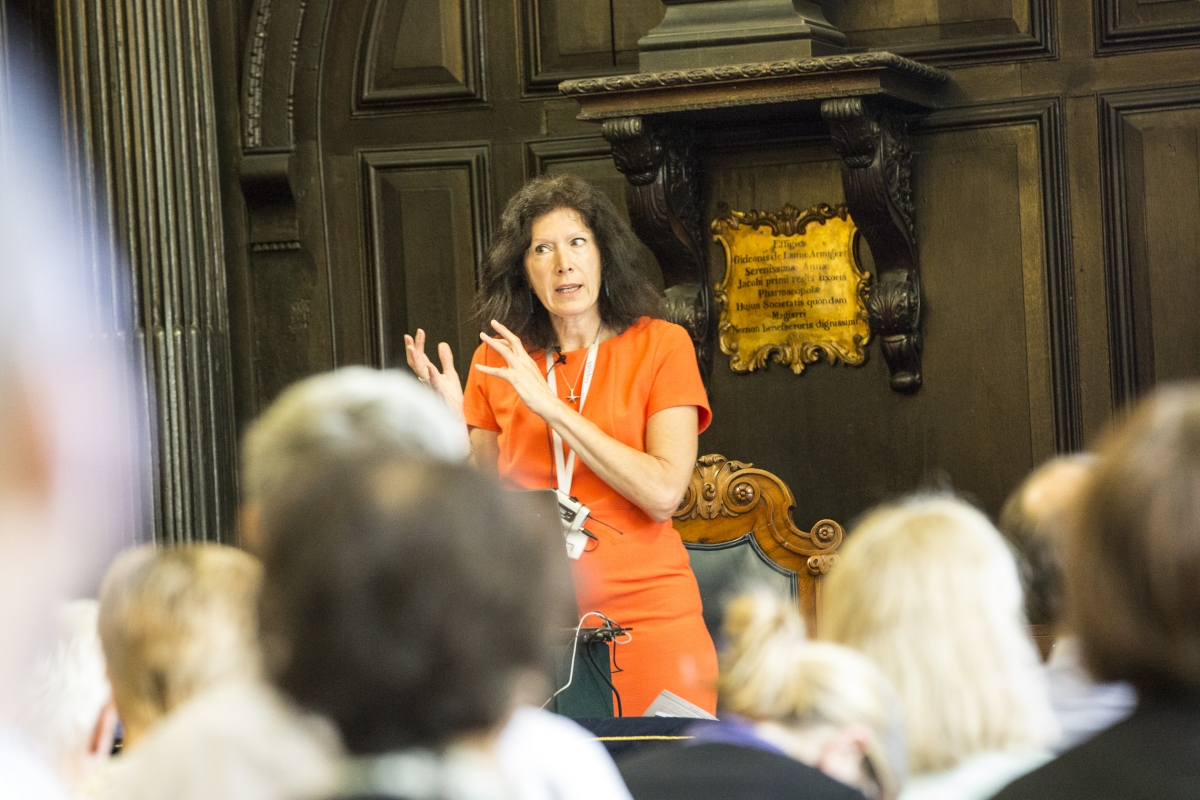 specialising in thrombosis and haemostasis, especially in inherited and acquired thrombophilias, obstetric haematology, and acquired bleeding disorders. She is also Clinical Lead in Haematological Sciences within Viapath, and sits on the operational board. In England, Professor Hunt sits on the National VTE (venous thromboembolism) board where she is co-lead of the “Patient awareness and experience” work stream. She has published more than 250 peer-reviewed papers, runs a very active research group and is co-founder and Medical Director of ‘Lifeblood: the thrombosis charity’.
specialising in thrombosis and haemostasis, especially in inherited and acquired thrombophilias, obstetric haematology, and acquired bleeding disorders. She is also Clinical Lead in Haematological Sciences within Viapath, and sits on the operational board. In England, Professor Hunt sits on the National VTE (venous thromboembolism) board where she is co-lead of the “Patient awareness and experience” work stream. She has published more than 250 peer-reviewed papers, runs a very active research group and is co-founder and Medical Director of ‘Lifeblood: the thrombosis charity’.
Talk title: Excitement in the thrombosis world
The world of thrombosis has been changed radically by advances in diagnosis and treatment. The use of the D-dimer assay and exciting new imaging techniques have improved diagnosis of venous thromboembolism, and NICE have delivered extensive guidelines in the field of thrombosis, clarifying the diagnostic and treatment pathway, and the role of thrombophilia screening. The biggest advance is the development of new oral anticoagulants which, unlike their much maligned predecessor warfarin, do not require changes in diet and alcohol consumption or regular monitoring, and have a lower risk of intracerebral bleeding. The current challenge is that uptake of these new anticoagulants has been surprisingly slow in the UK compared to the rest of the world, and the barriers to implementation will be discussed. In the long term however, there will be a major impact on the type and volume of assays performed by haemostasis laboratory services.
Session 2, chaired by Dr Jonathan Edgeworth, covered a talk from Professor S. Dusko Ehrlich on The healthy microbiome - prospects for diagnosis and intervention, Dr Shaleen Braham on Establishing a mycology service - improving the detection of invasive fungal infections in immunocompromised patients and Opportunities for early diagnosis of HIV in the community from Dr Sam Douthwaite.
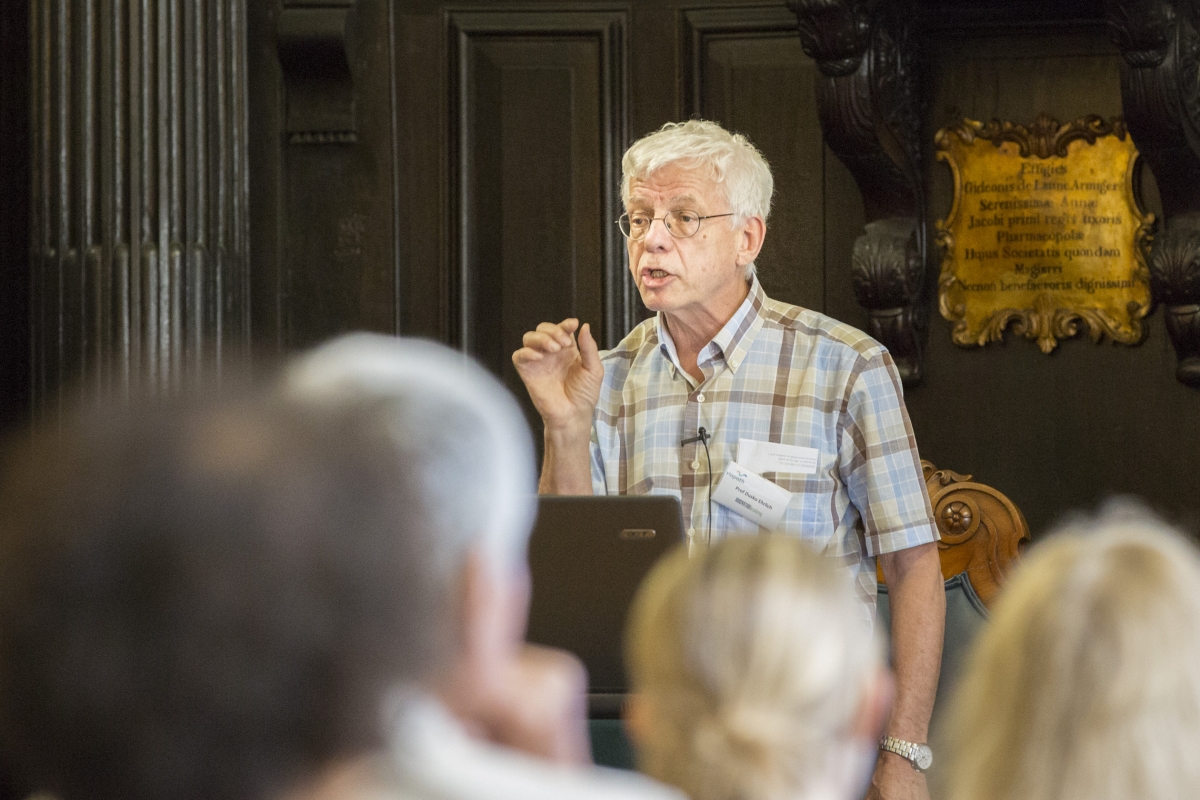 Speaker: Professor S. Dusko Ehrlich
Speaker: Professor S. Dusko Ehrlich
Professor Stanislav Dusko Ehrlich was trained in Organic Chemistry at the University of Zagreb, Croatia, and obtained a PhD degree in Biochemistry at the University Paris VII, France. He founded and directed the Microbial Genetics Research Unit and the Microbiology Department at INRA. He also founded a start-up company Enterome, developing microbiome-based biomarkers. With research interests in the human microbiome, he coordinated the EU-funded project MetaHIT and is the PI of the French Government Investissement d’Avenir 19 M€ grant MetaGenopolis. He has authored or co-authored over 330 publications in peer-reviewed scientific journals, 50 book chapters, and 10 patents. He is a member of the French Academy of Agriculture, Croatian Academy of Sciences and Arts, the European Molecular Biology Organisation and the American Academy of Microbiology.
Talk: The healthy microbiome - prospects for diagnosis and intervention
Chronic diseases impose a high cost on our societies. We found that one in four people has decreased gut microbial richness and harbours a less healthy microbiome (Le Chatelier et al, Nature 500, 541-546, 2013). The loss is associated with altered metabolic parameters, placing microbe-poor individuals at a higher risk of developing metabolic syndrome associated pathologies such as type 2 diabetes, hepatic and cardio-vascular complications. It can be detected accurately and corrected, at least in part, by a nutritional intervention, in parallel with amelioration of metabolic parameters (Cotillard et al, Nature 500, 585-588, 2013). We thus seem to be in a position to detect the risk and act to alleviate it, possibly delaying advent of common chronic diseases. This provides a lead that should be followed for other chronic diseases and if successful could help to re-orient medicine from largely curative to preventative and thus greatly impact public health.
 Speaker: Dr Sharleen Braham
Speaker: Dr Sharleen Braham
Dr Sharleen Braham is a Clinical Scientist with over 10 years of molecular biology and serology experience. She joined Viapath to establish a mycology service, in order to provide a rapid diagnostic service for the detection of invasive fungal infections. Dr Braham completed a bachelor’s degree with honours in Biomedical Sciences and a Masters in Applied Molecular Biology of Infectious Diseases. She also has a PhD in Life Sciences-Microbiology.
Talk: Establishing a mycology service - improving the detection of invasive fungal infections in immunocompromised patients
Invasive fungal infection (IFI) is a leading cause of infection-related morbidity and mortality in immunocompromised patients. Diagnosis of IFI often relies upon clinical symptoms and radiology, as culture confirmation of the main causative agents (Aspergillus spp. and yeasts) is not always possible. Uncertain or delayed diagnosis can lead to a worse outcome for the patient and inappropriate antifungal use, with associated costs. Therefore, a mycology diagnostic service has been established in the Microbiology Department, in order to rapidly diagnose IFIs using serological and molecular techniques. These laboratory diagnostics will support clinicians in the management of patients. The different diagnostic techniques will be discussed. The future aims and goals of research for improving the detection of IFIs will be presented.
Following lunch, the final session included the chair Professor Anthony Wierzbicki's talk on Novel diagnostic methods in lipids and Screening for ‘causes’ of hypertension - needles, haystackes and mass spec(ulation)? by Professor Kennedy Cruickshank.
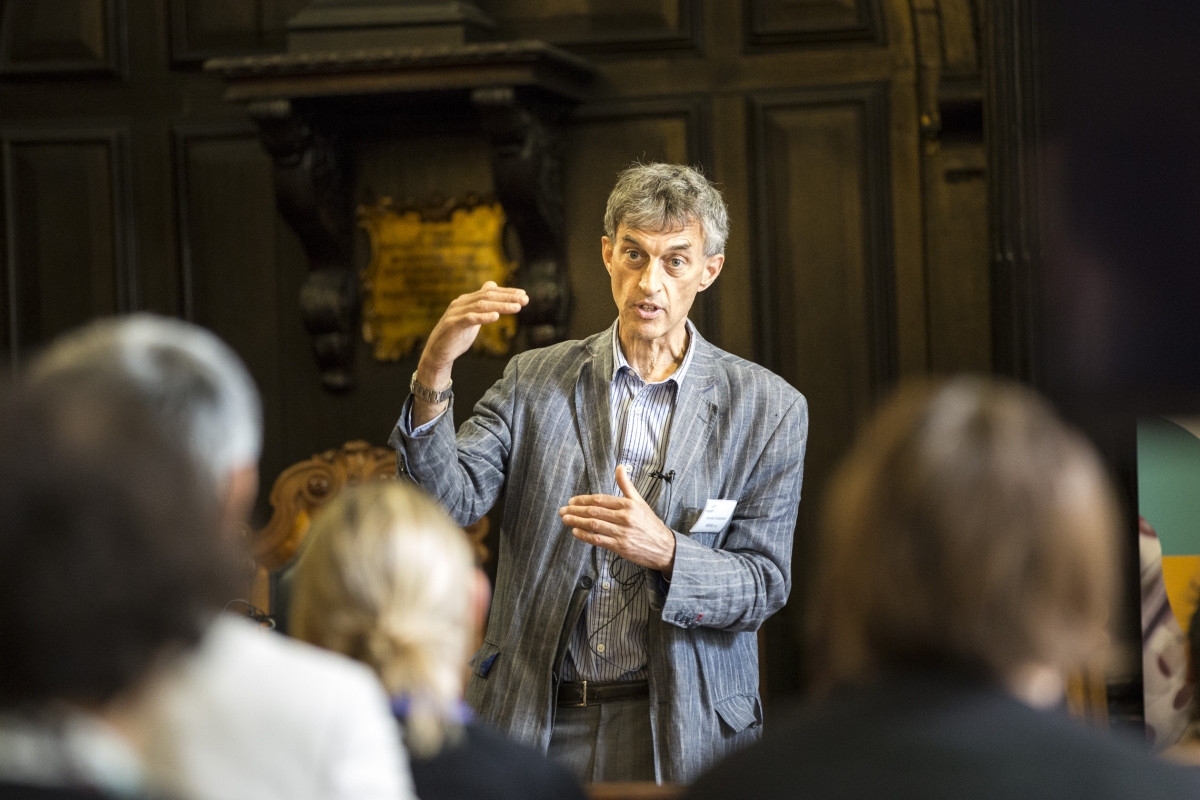 Speaker: Professor Kennedy Cruickshank
Speaker: Professor Kennedy Cruickshank
A professor in Cardiovascular Medicine and Diabetes and Honorary Consultant Physician at St Thomas' Hospital, Professor Cruickshank’s research focus is arterial function and stiffness as a target for treating cardiovascular disease/diabetes, and specifically high blood pressure. His less clinical work is the origin of ethnic differences in these conditions over the life-course, particularly in Caribbean and West African origin peoples, and their inter-generational, non-genetic transmission. He has been a major investigator in many international clinical trials on high blood pressure and diabetes, including Ascot, Advance and currently the British Hypertension Society’s Pathway trials.
Talk title: ‘Screening for ‘causes’ of hypertension – needles, haystacks & mass spec(ulation)?’
The search for reliable, cheap, effective means of detecting ‘secondary’ causes of high blood pressure amidst the sea of apparently ‘essential’ hypertension has proved highly elusive. Case yield from screening for rare phaeochromocytomas is low, as it is for excess adrenal cortical hormones. However, mass spectrometry-based methods are becoming available to detect altered steroid hormone profiles. This talk discusses the pros and cons of applying such efforts – and whether it makes any difference to patient outcomes.
December 2013 Event
The second Innovation Academy Symposium was held on 6th December 2013 at The Royal Institution of Great Britain, London. The theme for the event was ‘Personalised medicine: Today’s reality, not just a promise for tomorrow’. Experts in clinical science presented examples of where diagnostics are already in use to provide personalised treatment. The talks formed the below three streams, click the tabs to view details on each.
Introduction to therapeutic drug monitoring, by Professor Roy Sherwood
"The principles of personalised medicine have been around and applied for years, but in recent times it has been primarily associated with developments in “companion diagnostics” and their use in oncology. This is a key area of patient care with developments improving the therapeutic success and reducing harm through the targeting of medication to patients who are most likely to respond. However, the technologies and expertise that deliver these improvements are also being applied in other clinical areas, and this session will examine our Therapeutic Drug Monitoring service for tailoring Thiopurine and anti-TNFα treatments for patients with IBD and other inflammatory disease, and how our laboratory innovations are leading to improvements in clinical care."
Introduction to infectious diseases and transplantation, by Dr Siobhan O’Shea
Introduction to Oncology
“The diagnosis and treatment of cancers is one of the most high profile, expensive areas of modern healthcare, attracting the highest levels of research and product development investment. Cancer treatment protocols are being redefined by the availability of more effective pharmacological agents targeting specific genetic mutations. Molecular diagnostics is enabling selection of specific treatment pathways associated with the best clinical and economic outcomes, and the stratification of patients to a defined protocol based upon the genetic signature of the specific tumour. Therapies can be targeted to those who are most likely to respond and benefit, and in patients who are not likely to benefit from a particular treatment, the unnecessary risks of side effects can be minimised. In this session we are introduced to current applications of these technology developments, and their impact on personalised treatment for cancer patients.”
Sharing expertise and innovation
From our network of over 60 laboratories, Viapath provides diagnostic support services to Bedford, Guy's, St Thomas’ and King’s College Hospitals. To meet the constantly developing needs of these world-class clinical institutions, our laboratories have become powerhouses of innovation and translational research. We work with the Trusts on R&D programmes that provide a continuous stream of practical improvements in diagnostic medicine.
We want to disseminate these innovations as widely as possible. In a programme of events over the coming years, we will bring together colleagues from the scientific, clinical and industrial fields to share developments in laboratory medicine – and showcase scientific advances that make a real difference to patient care.
We work hard to foster a dynamic, forward-thinking culture, and we support this through continued investment in diagnostic development. At Synnovis, we put our commitment to innovation into practice. Our three main areas of focus are innovation and research, quality improvements, and staff development. We hold events and scientific symposiums throughout the year, which include presentations on current trends and developments and provide important networking opportunities.
The Innovation Academy is an environment that allows us to celebrate the achievements of our staff, share them with a wider audience, and support the development of future scientific leaders. All our staff play an active role in developing and implementing innovation, while our scientific teams are fundamental to our future success.
Our three focuses are encompassed by the Innovation Accelerator Fund, a £1 million initiative which supports projects that drive innovation in pathology and laboratories, encouraging scientific research and development.
Three areas of focus
As demands on the healthcare system continue to grow, core clinical support disciplines such as pathology are under pressure to reduce costs and improve efficiency. At the same time they must develop newer and higher-value approaches to diagnosis and treatment.
This demands a continuous stream of research and innovation that delivers new tests and processes with a measurable impact on patient care. Our scientific and technical staff are at the heart of this innovation.
To date, pathology service providers have focused on identifying and minimising sources of analytical error. However, our research shows that often the biggest source of error is in pre- and post-analytical processes. The Innovation Academy champions programmes looking at pre- and post-analytical process improvement and identifying optimisation opportunities.
Quality is often overlooked as it is an expected part of a pathology service. This stream will ensure that it remains central to all our test and service developments.
The Innovation Academy is an environment that allows us to celebrate the achievements of our staff, share them with a wider audience, and support the development of future scientific leaders. All our staff play an active role in developing and implementing innovation; while our scientific teams are fundamental to our future success.
Last updated: 26/01/2017

